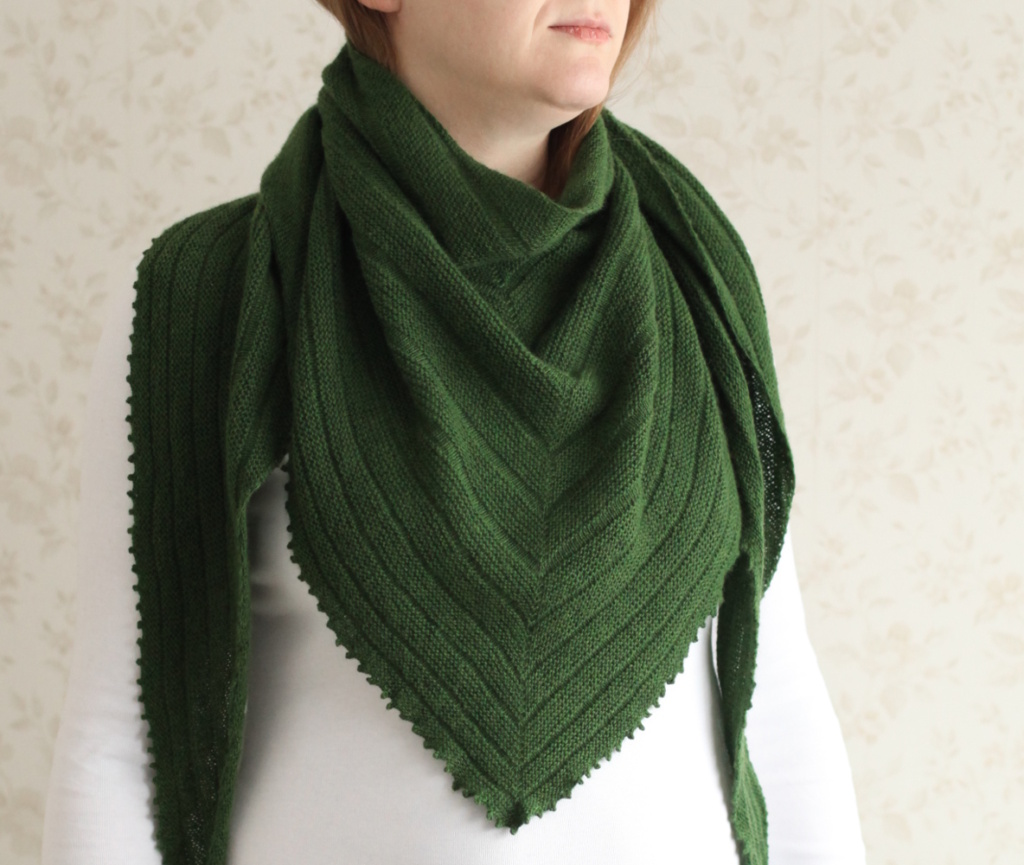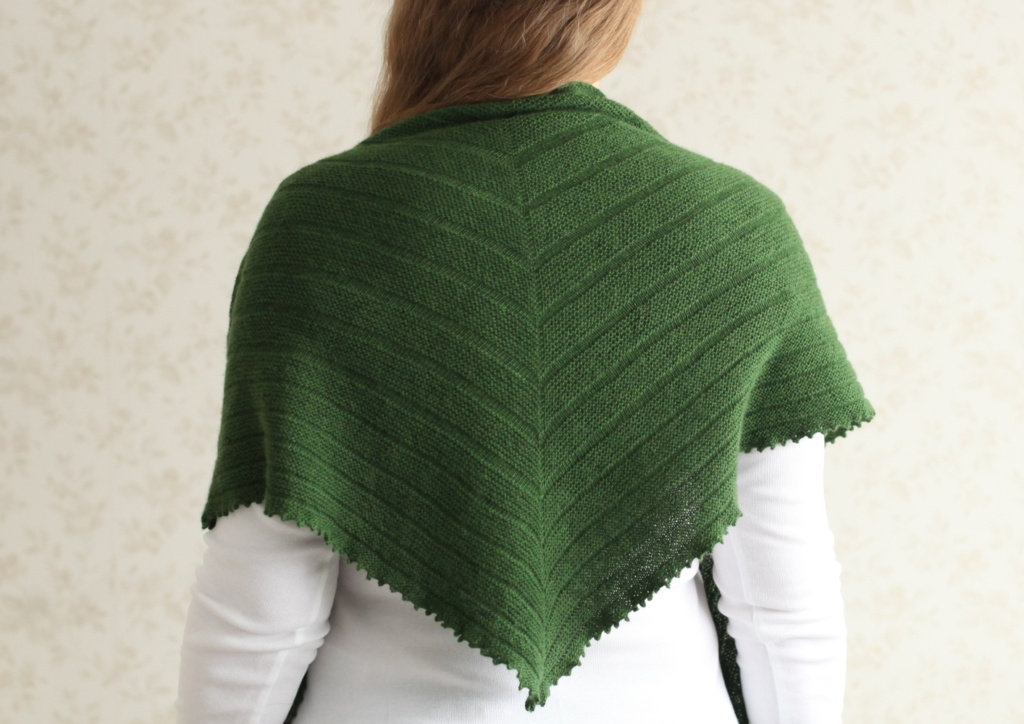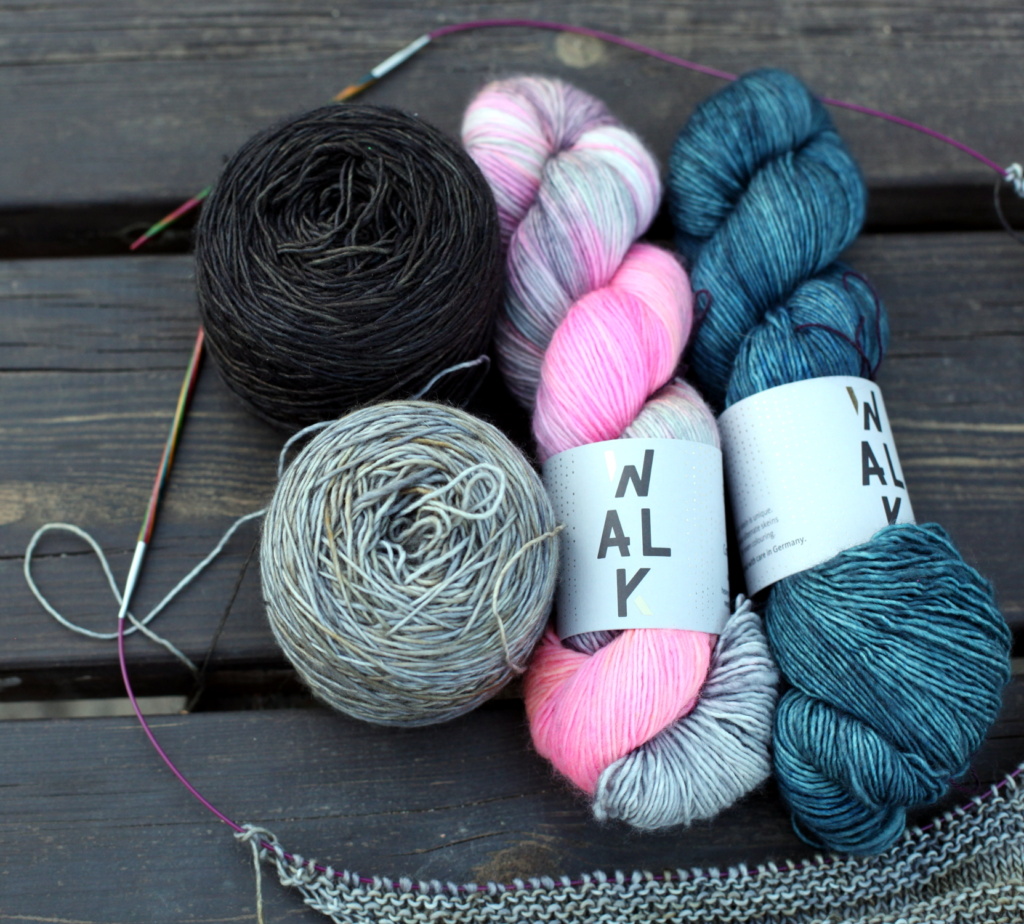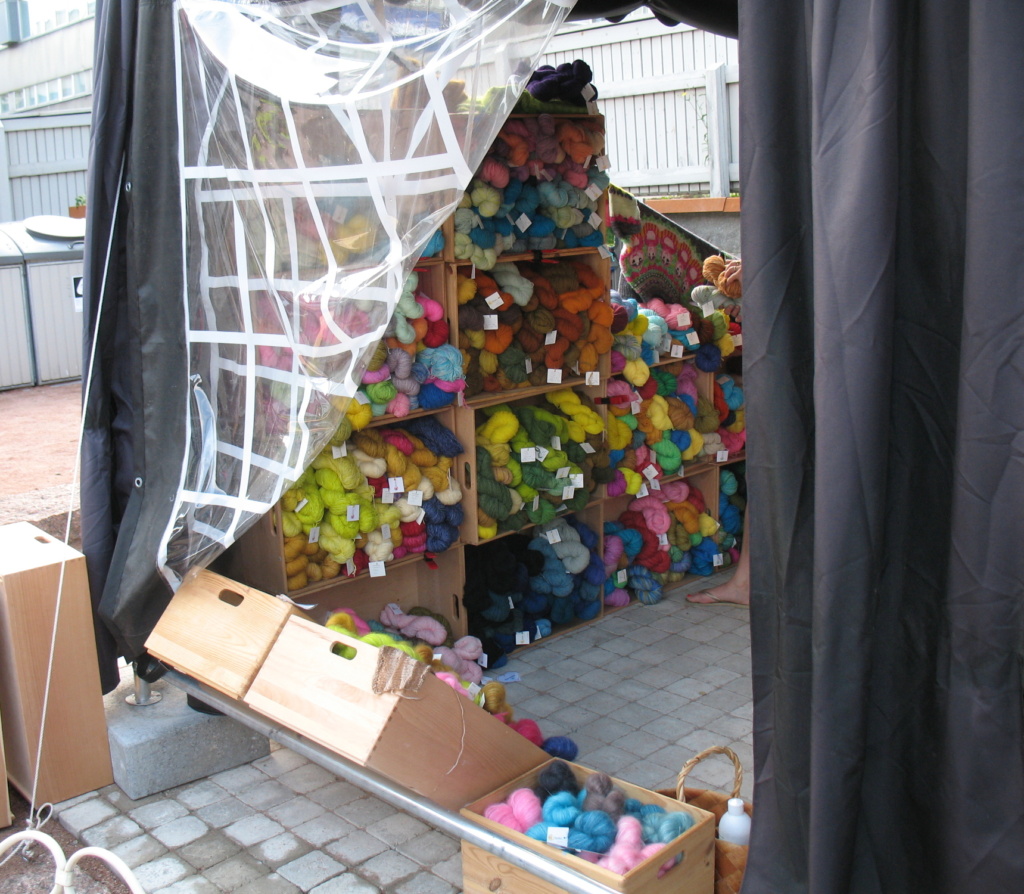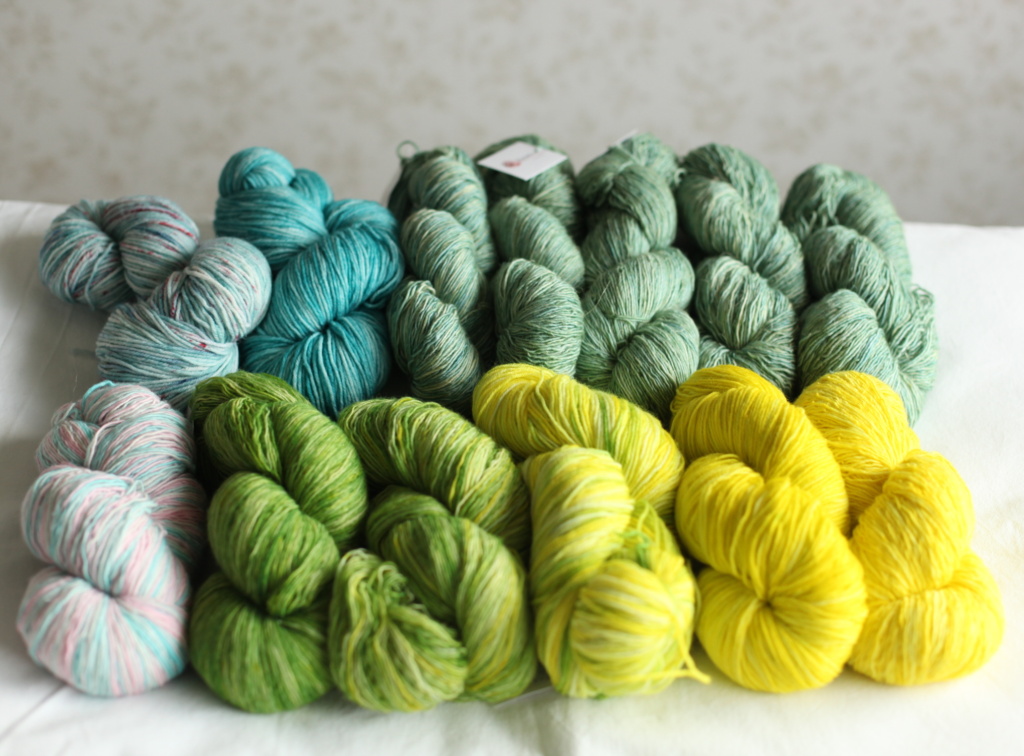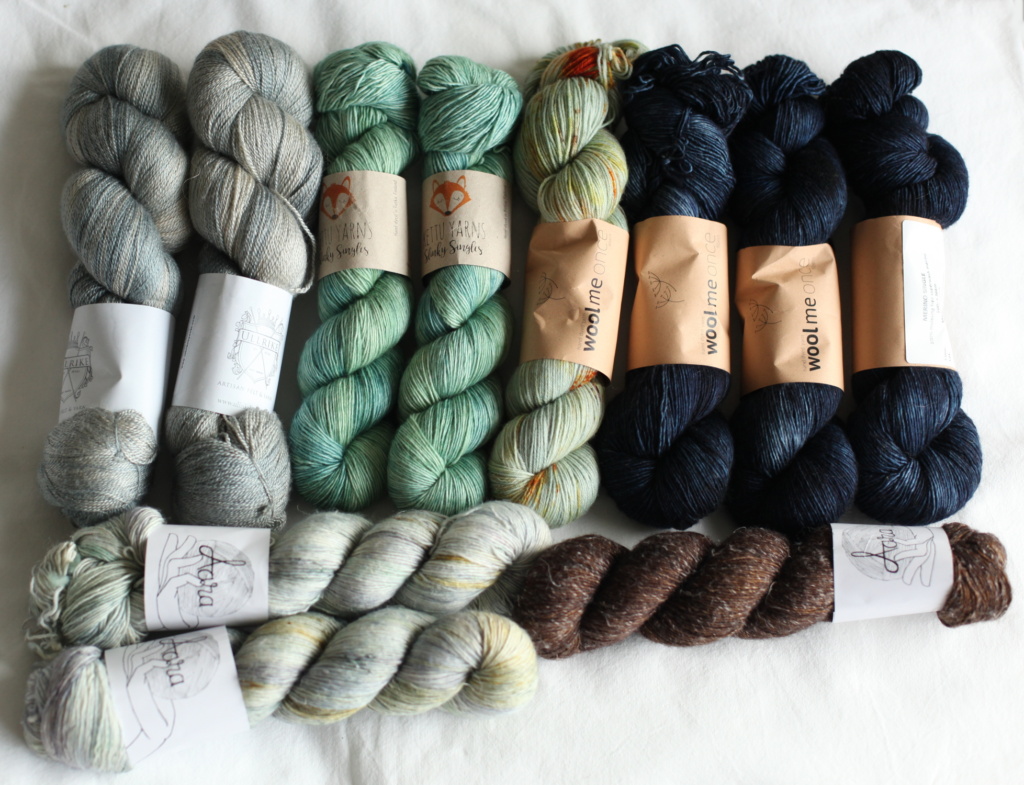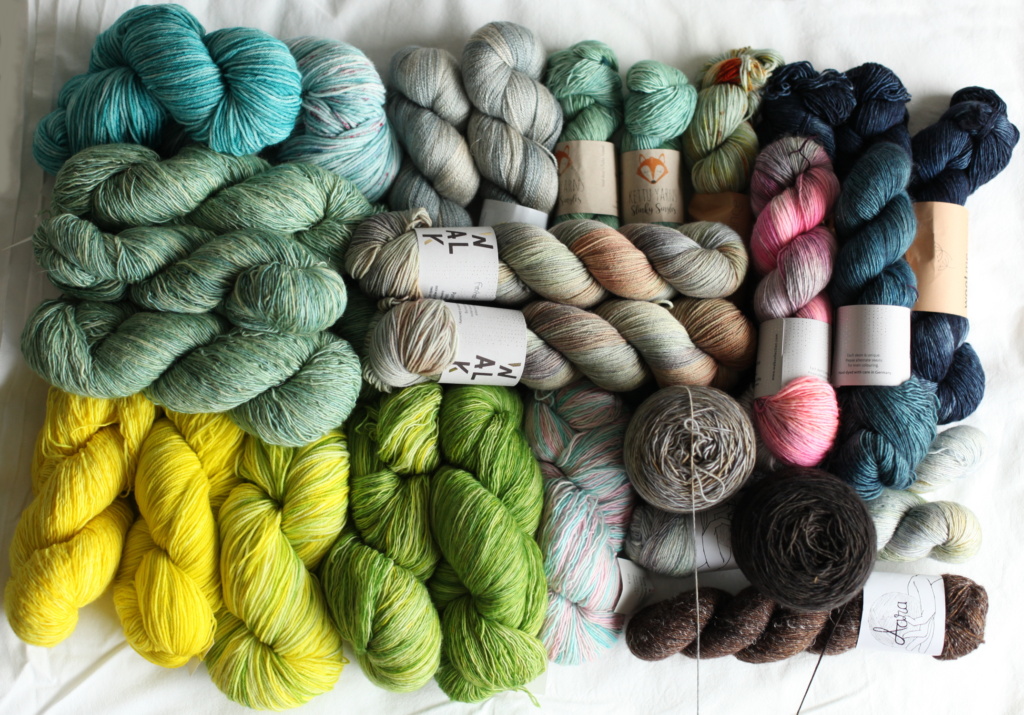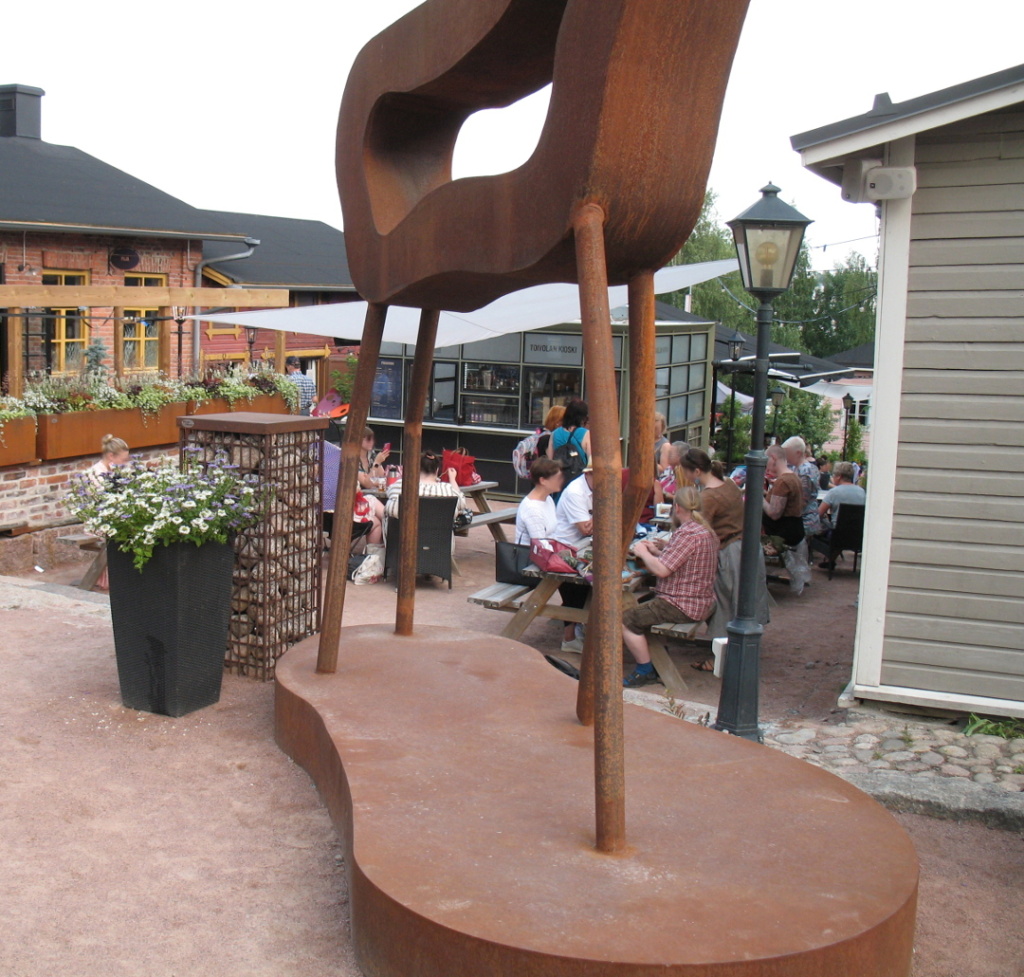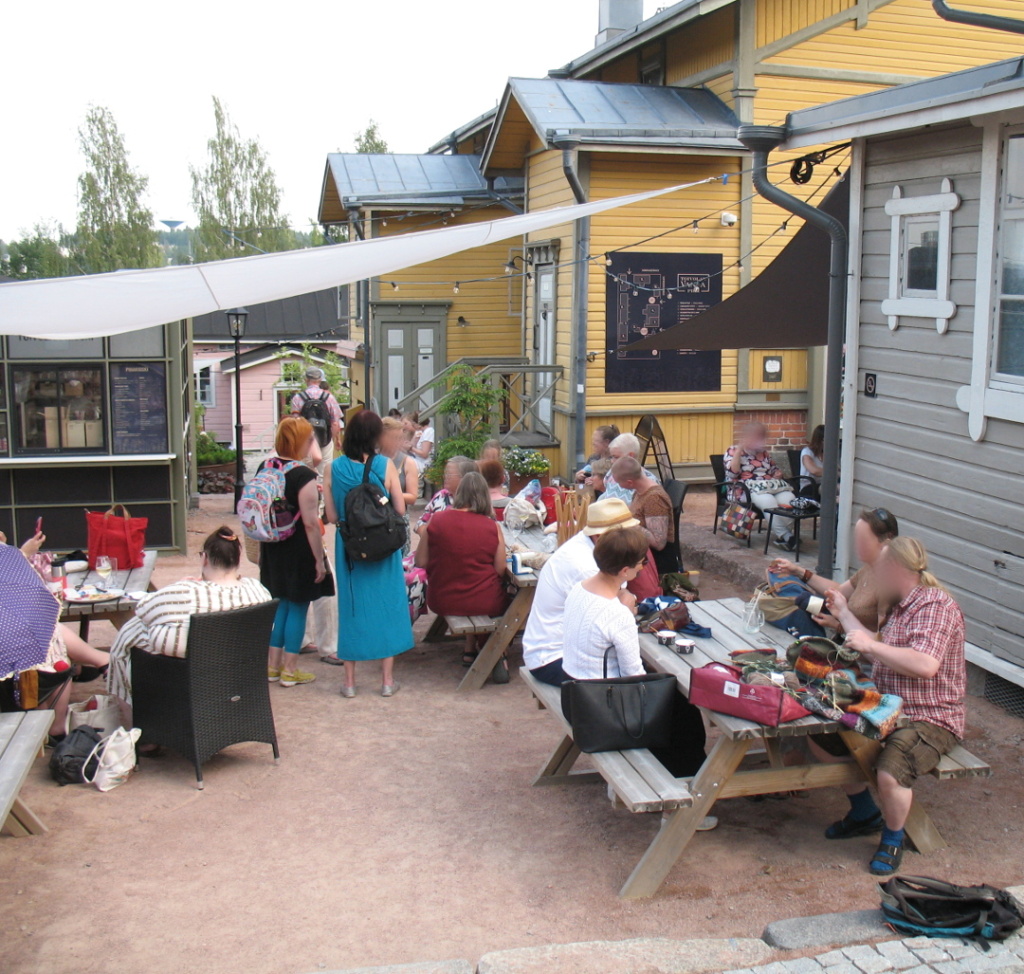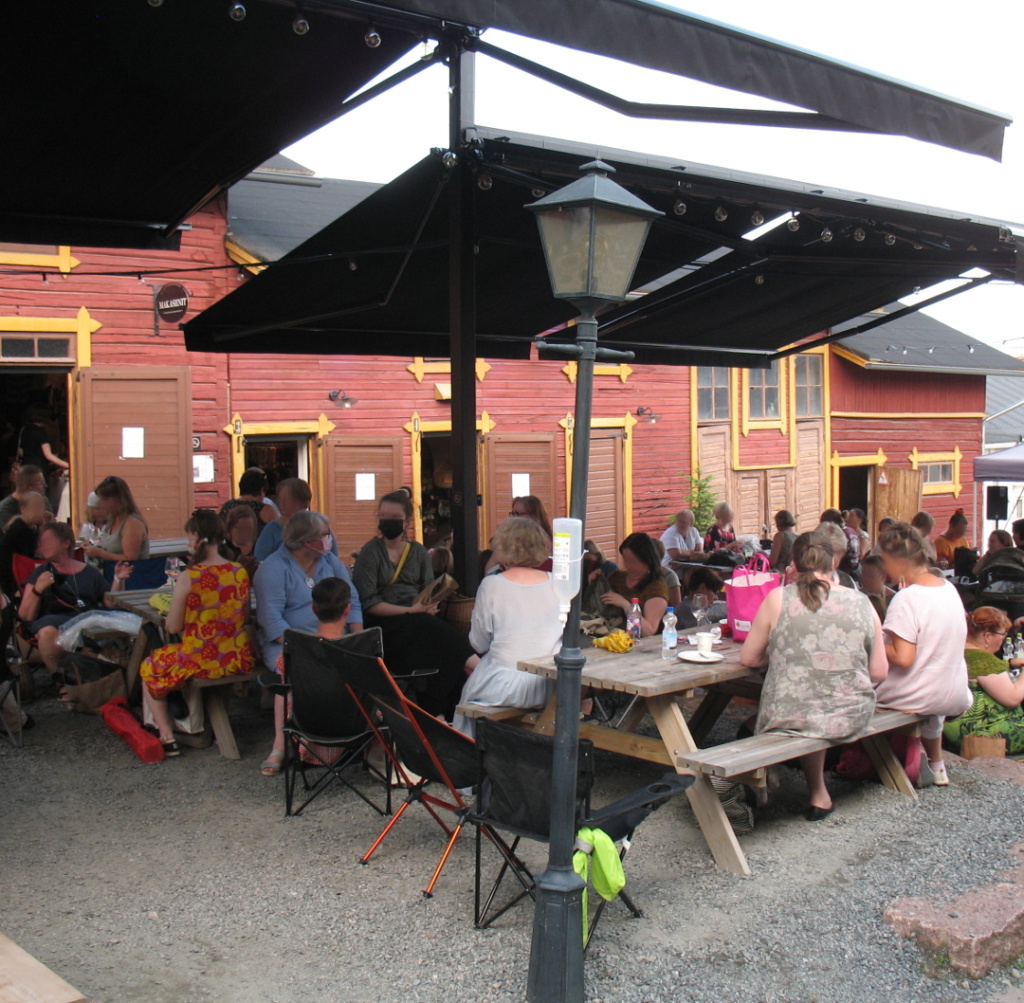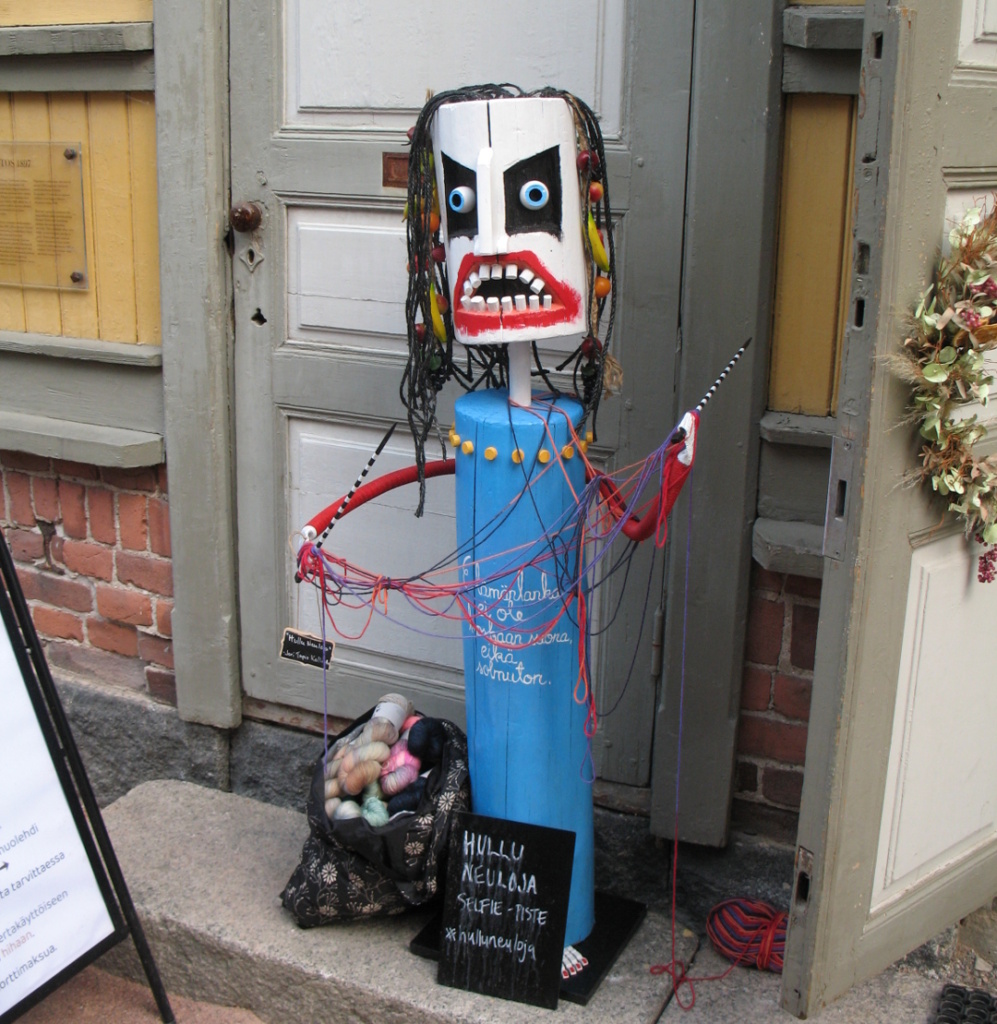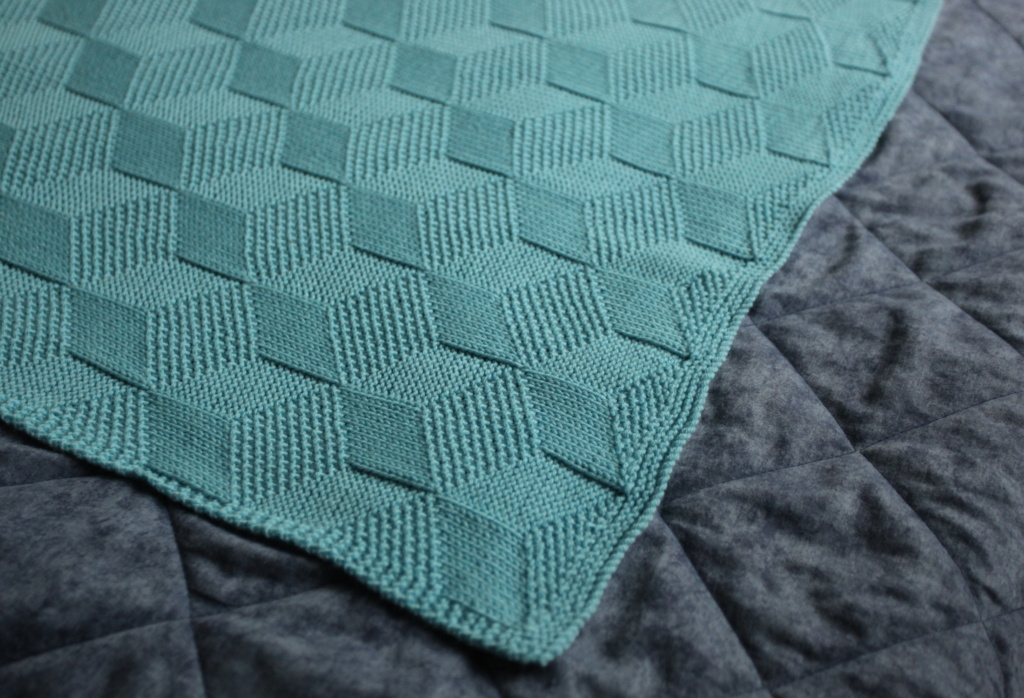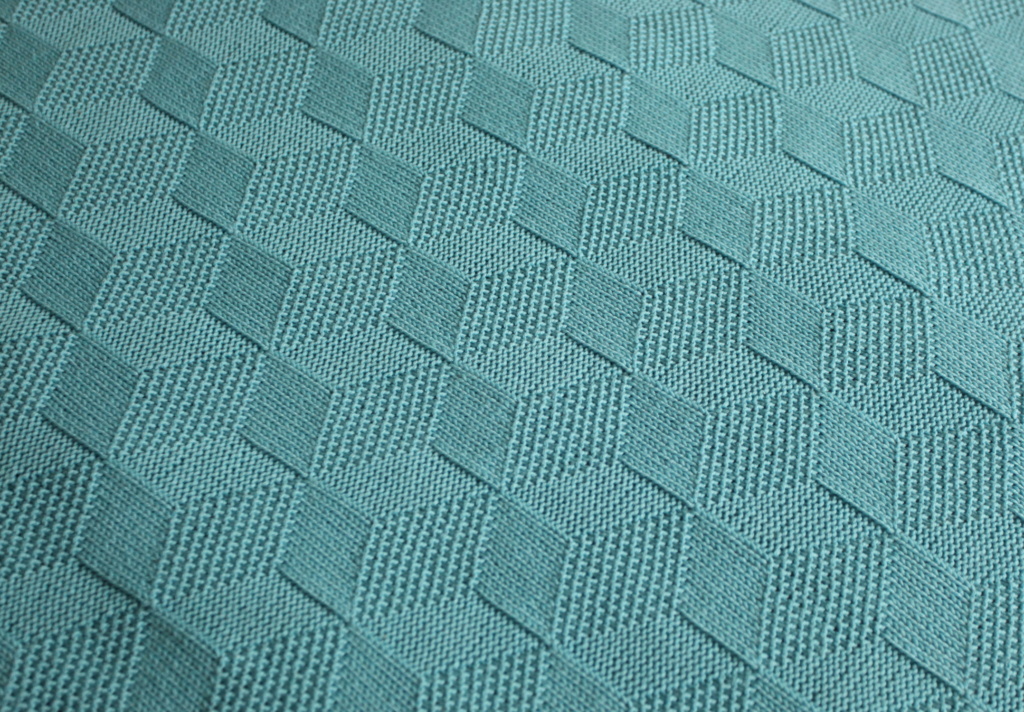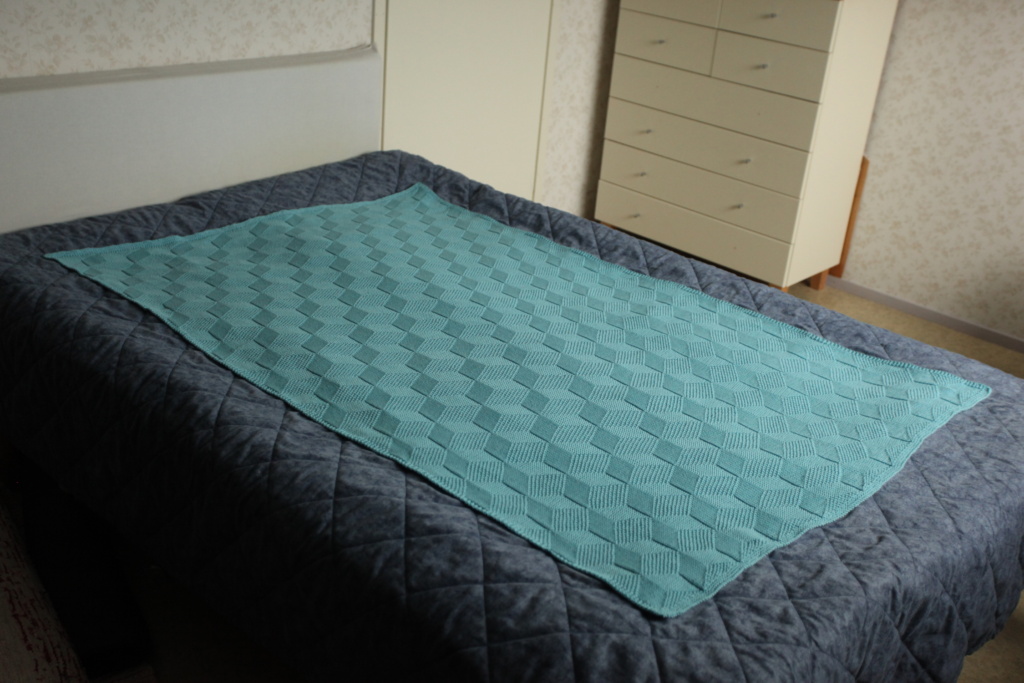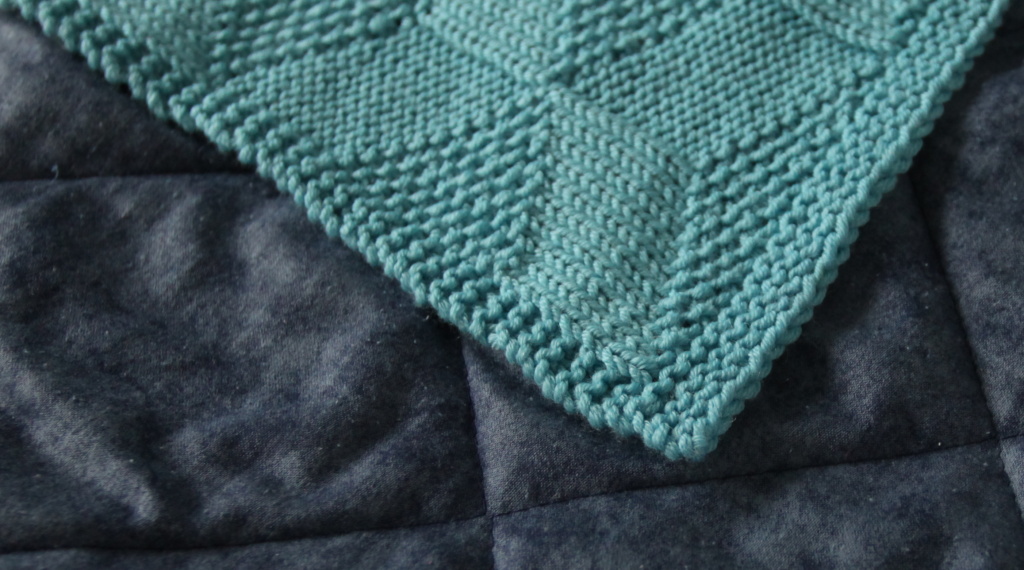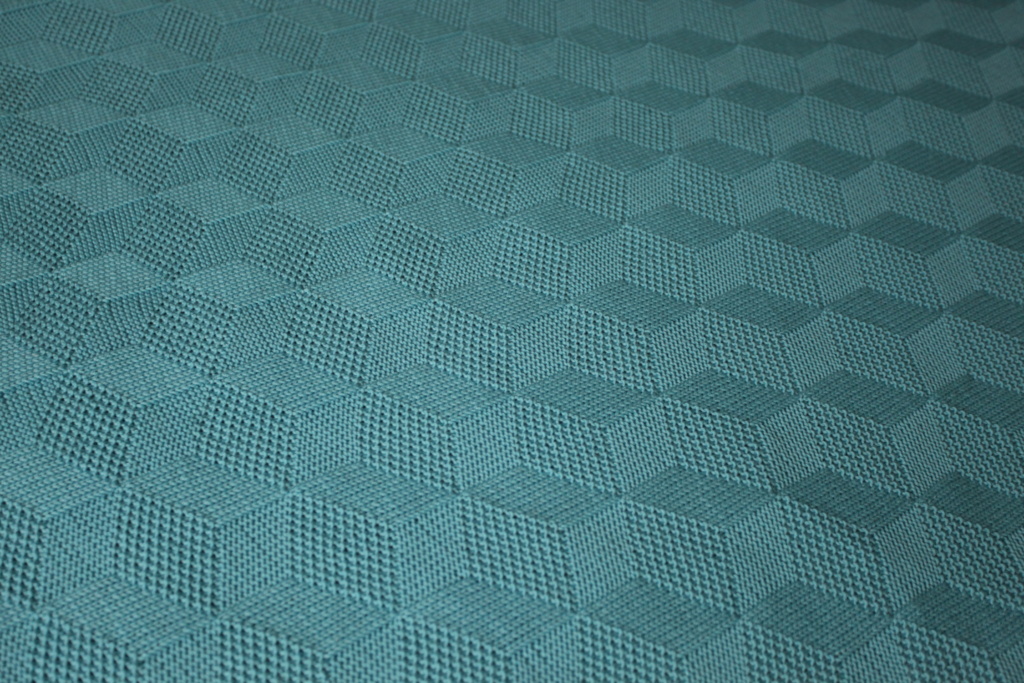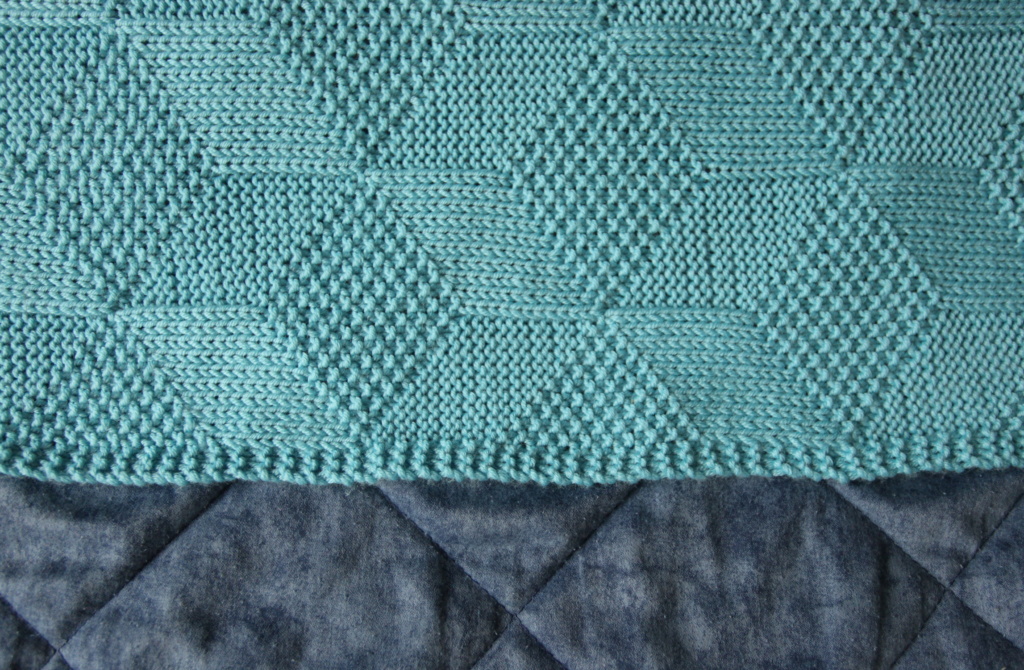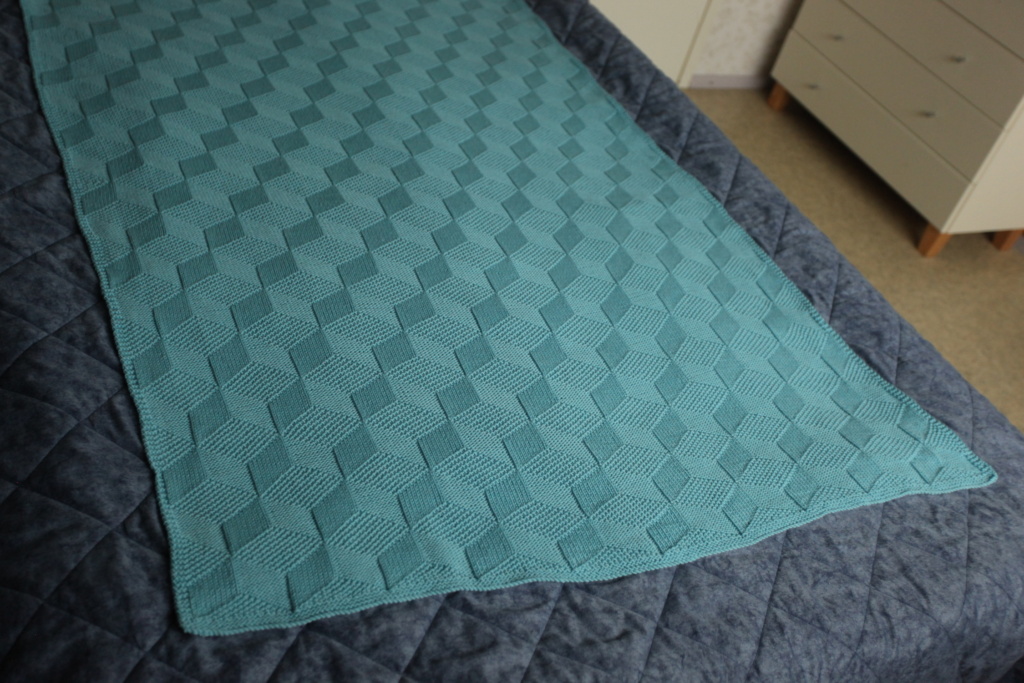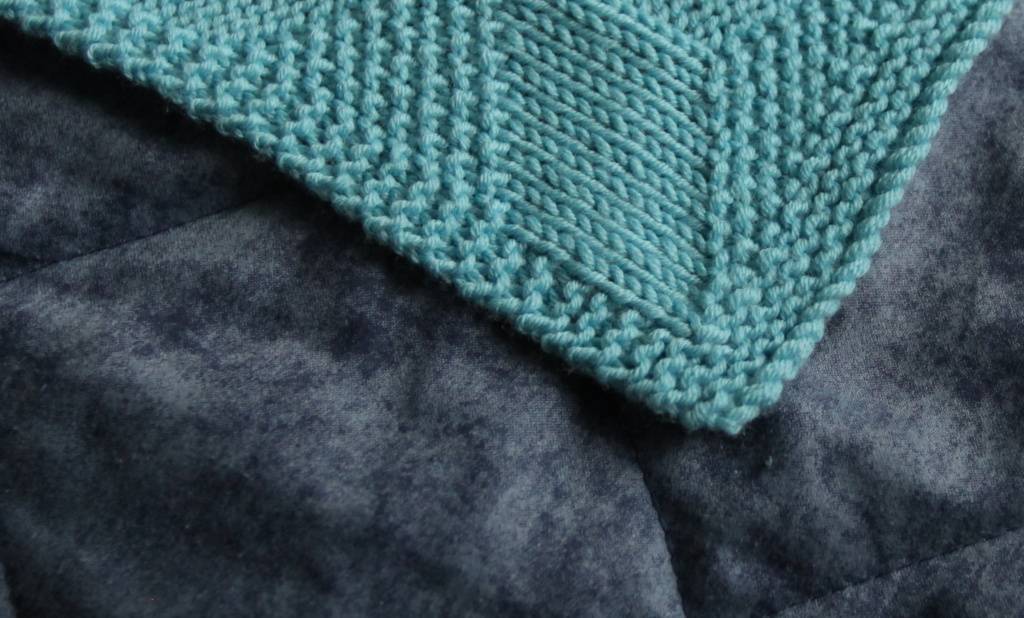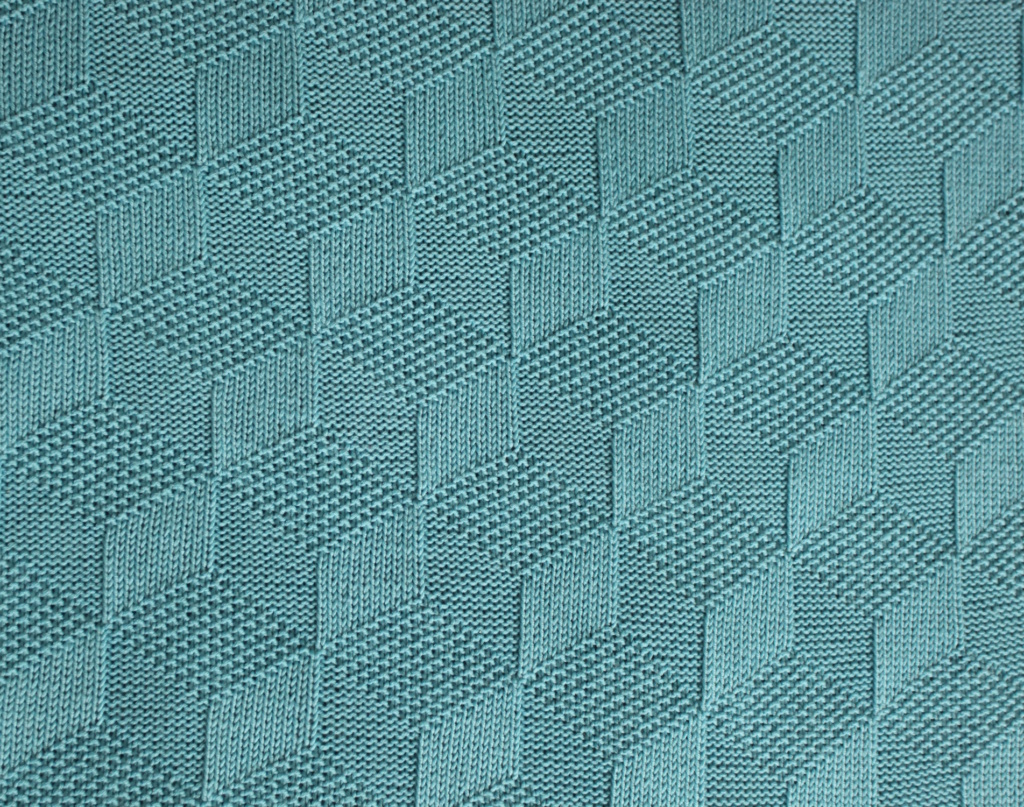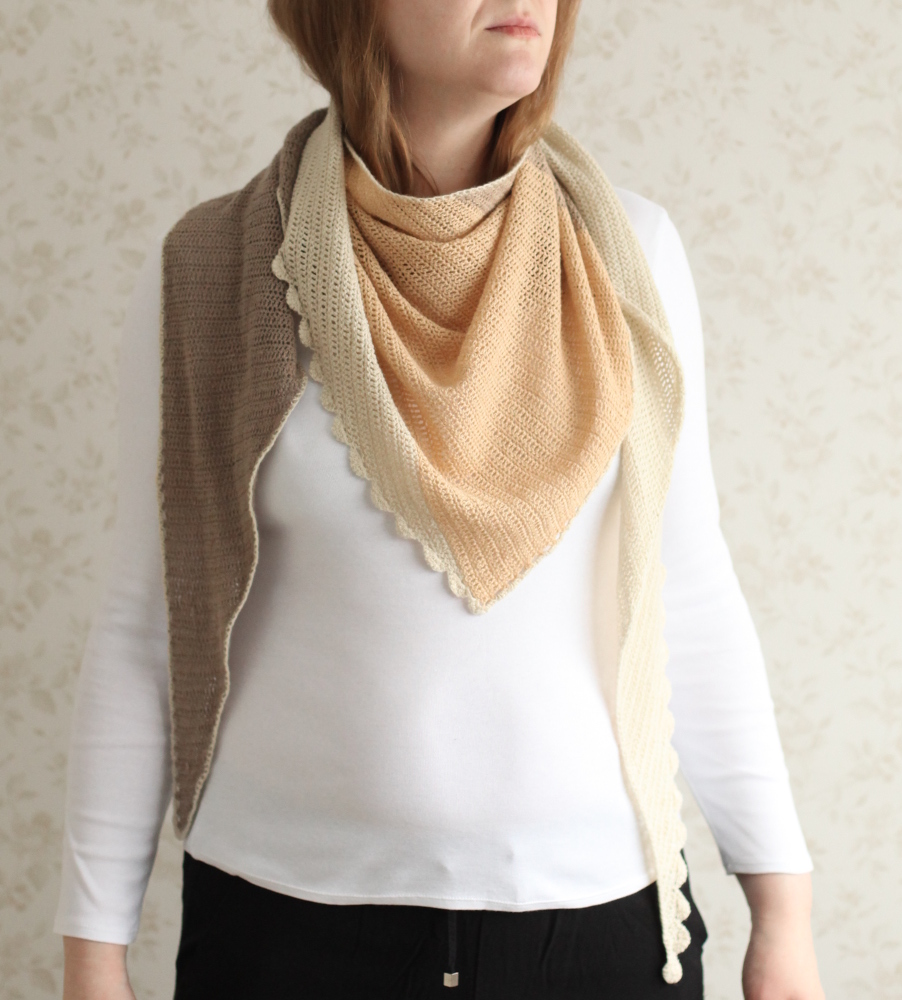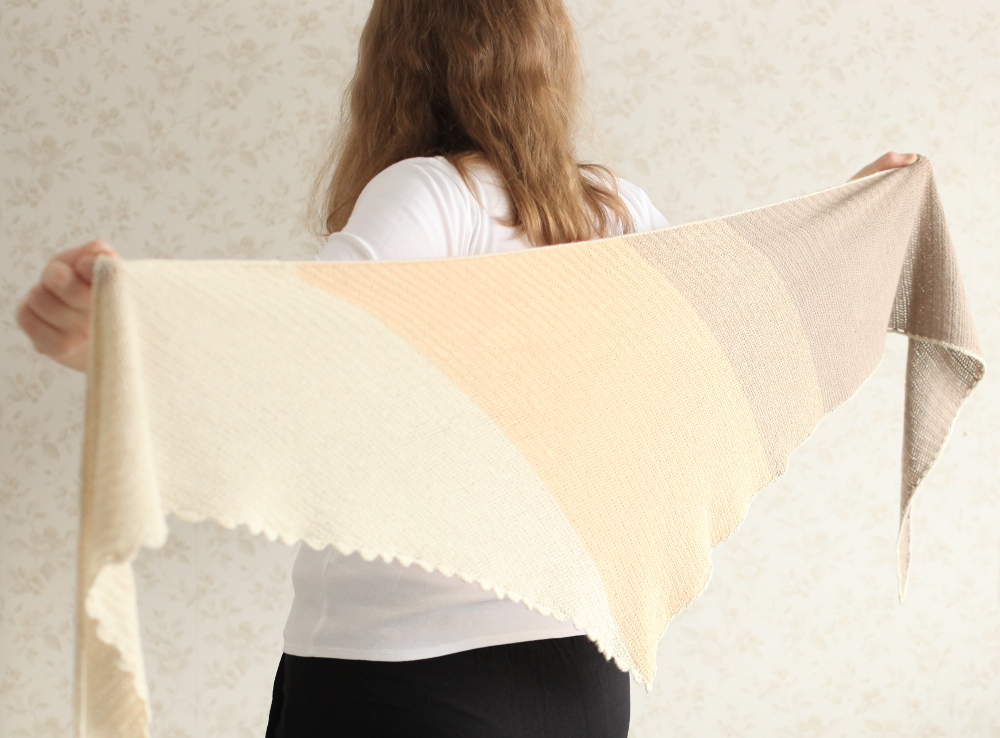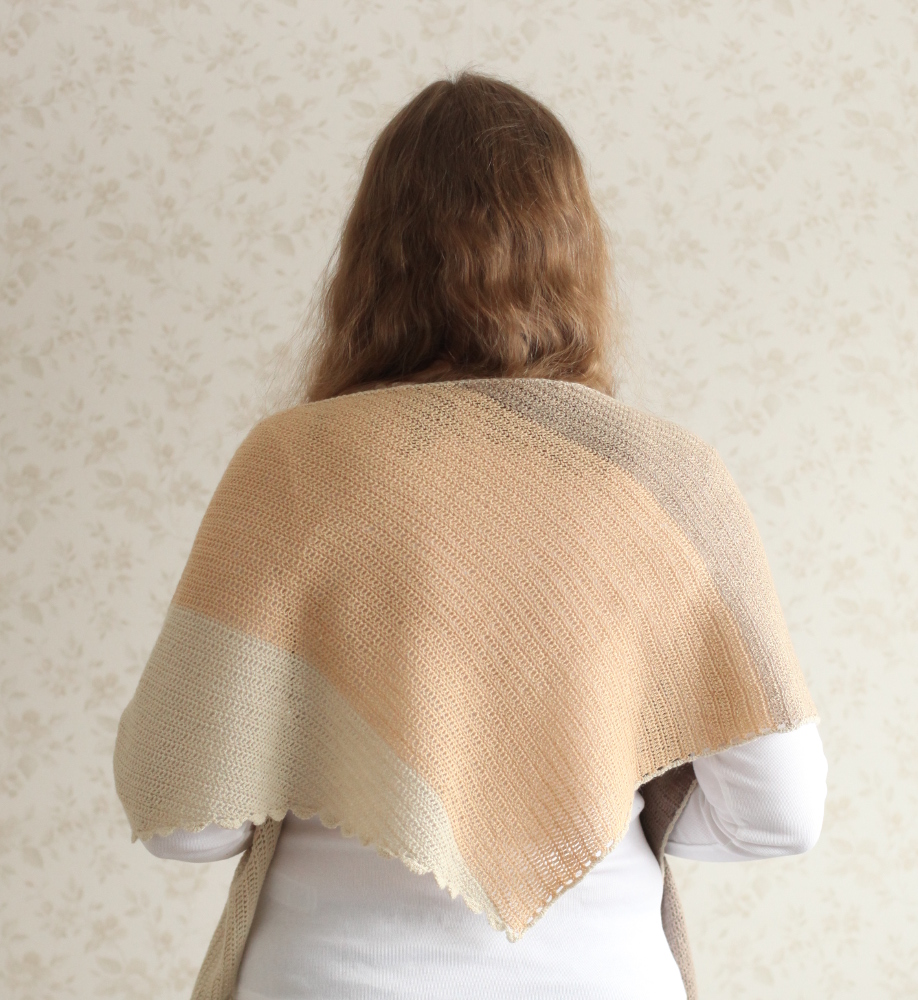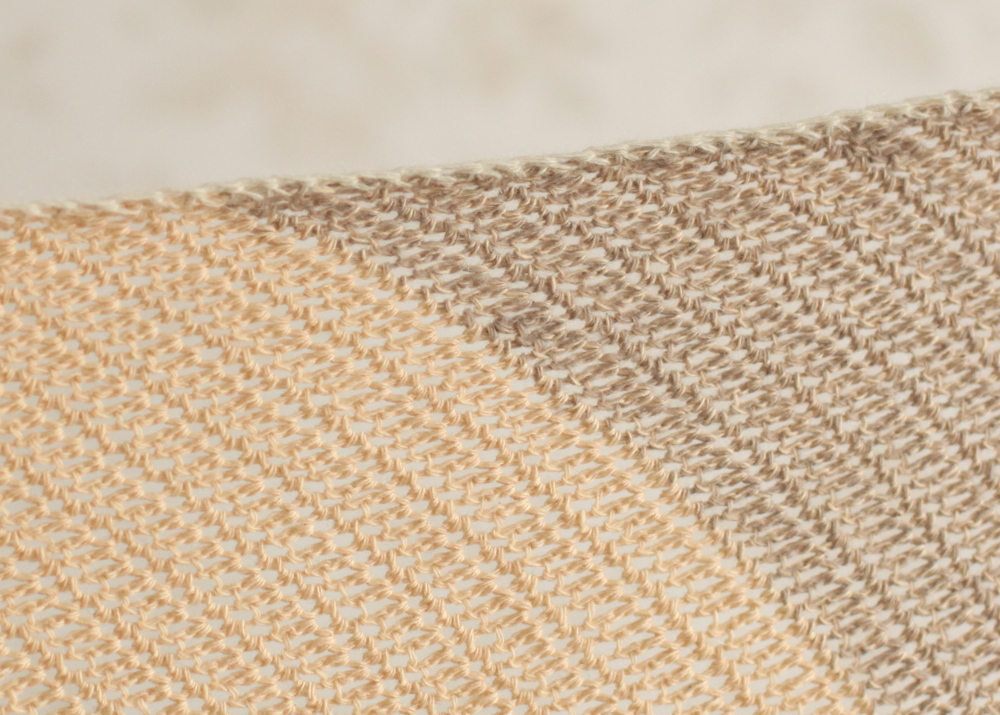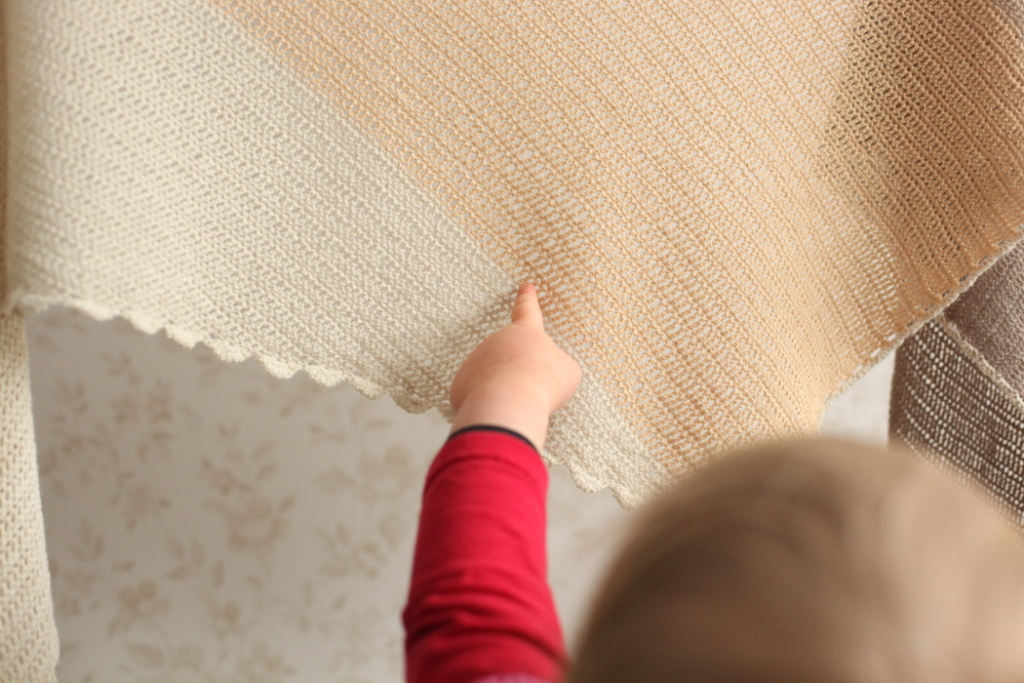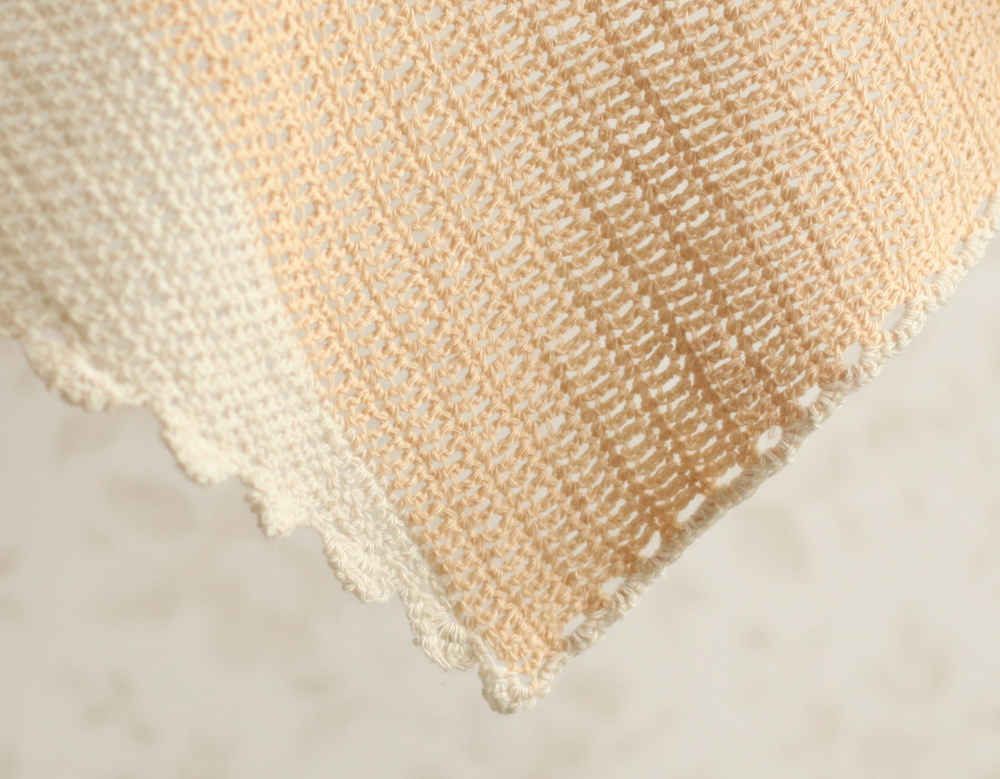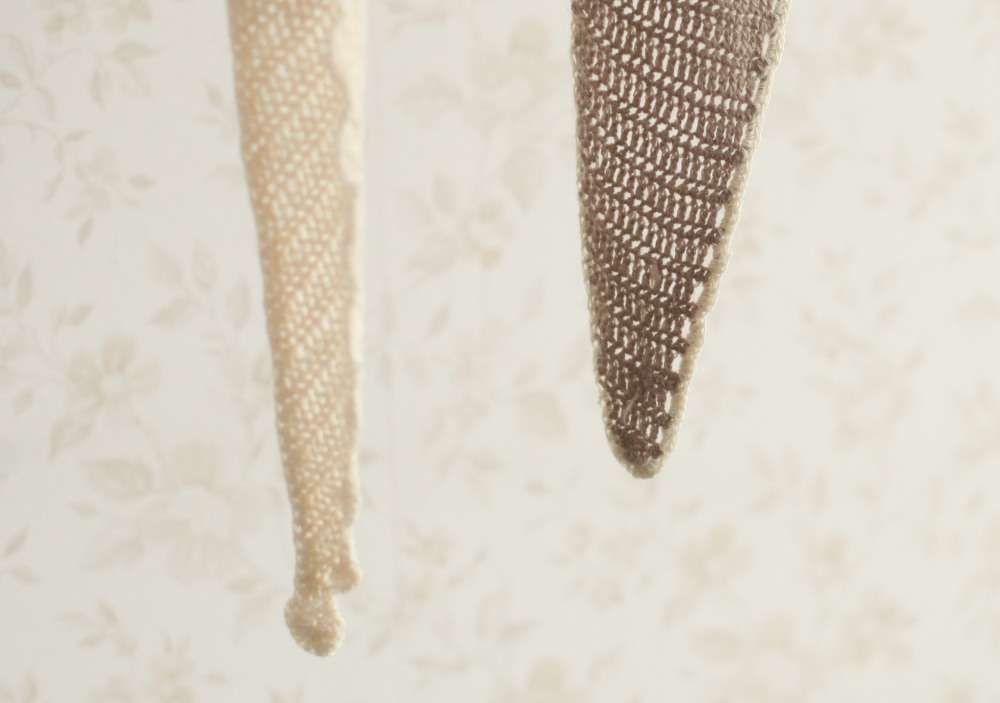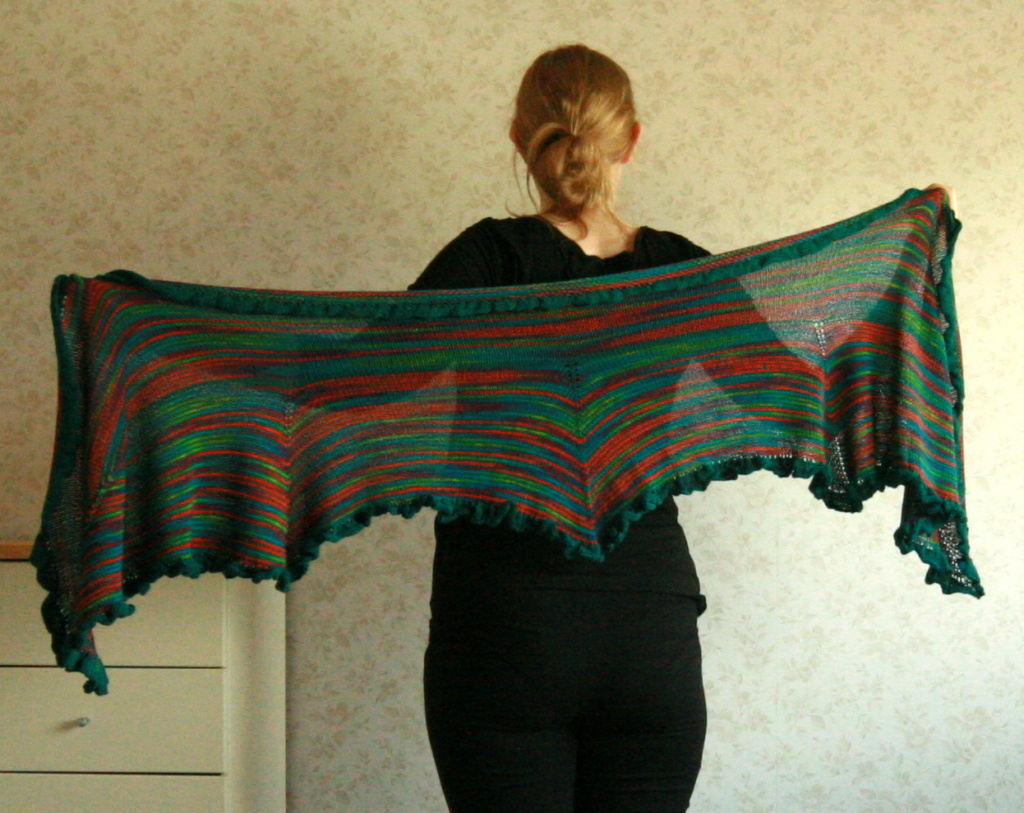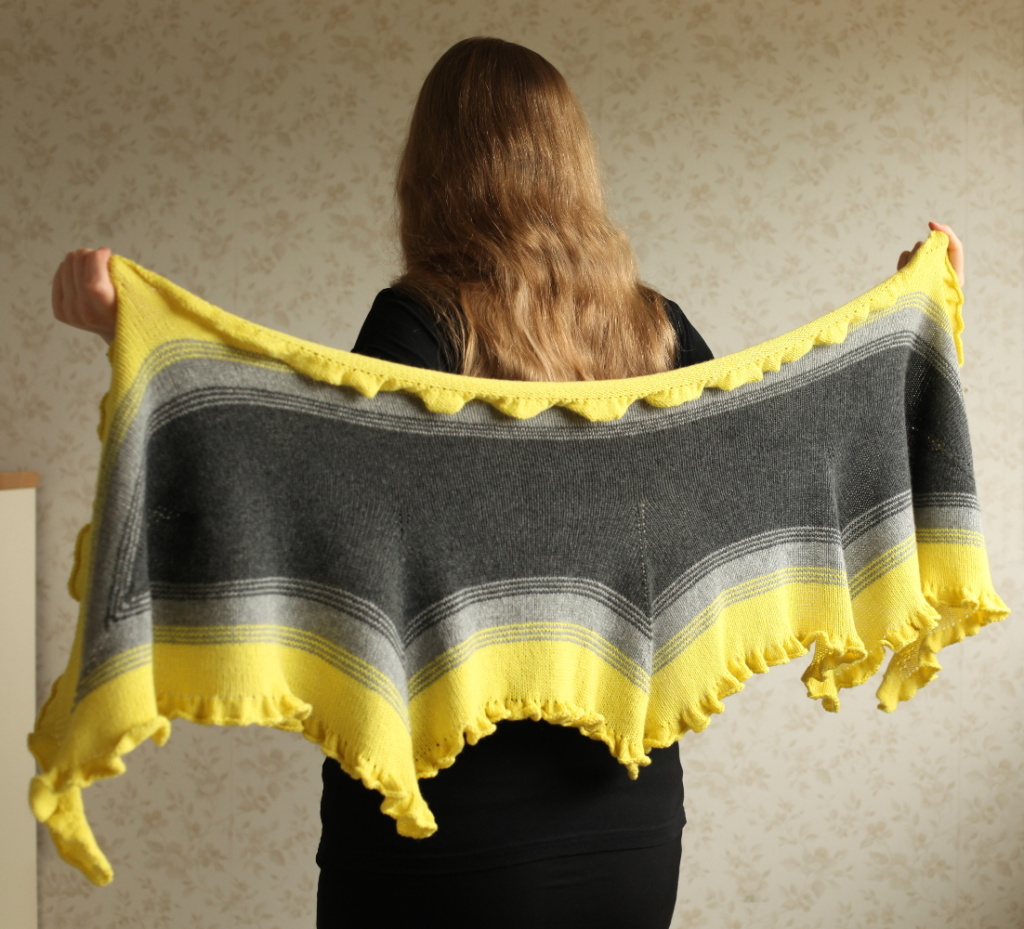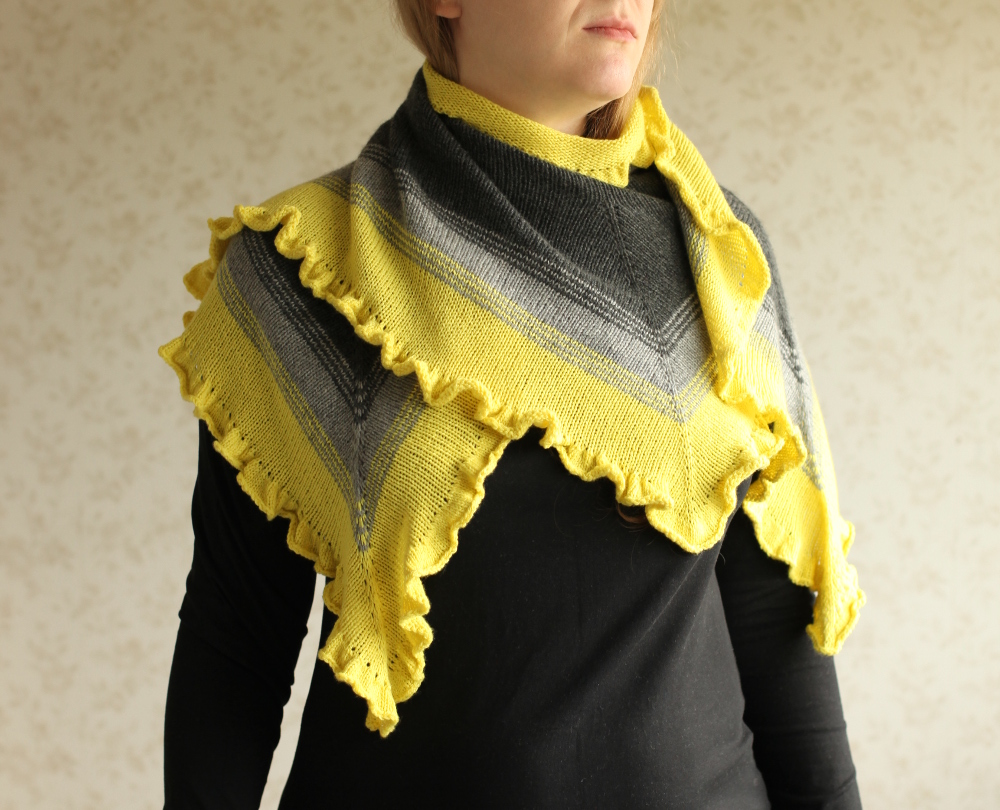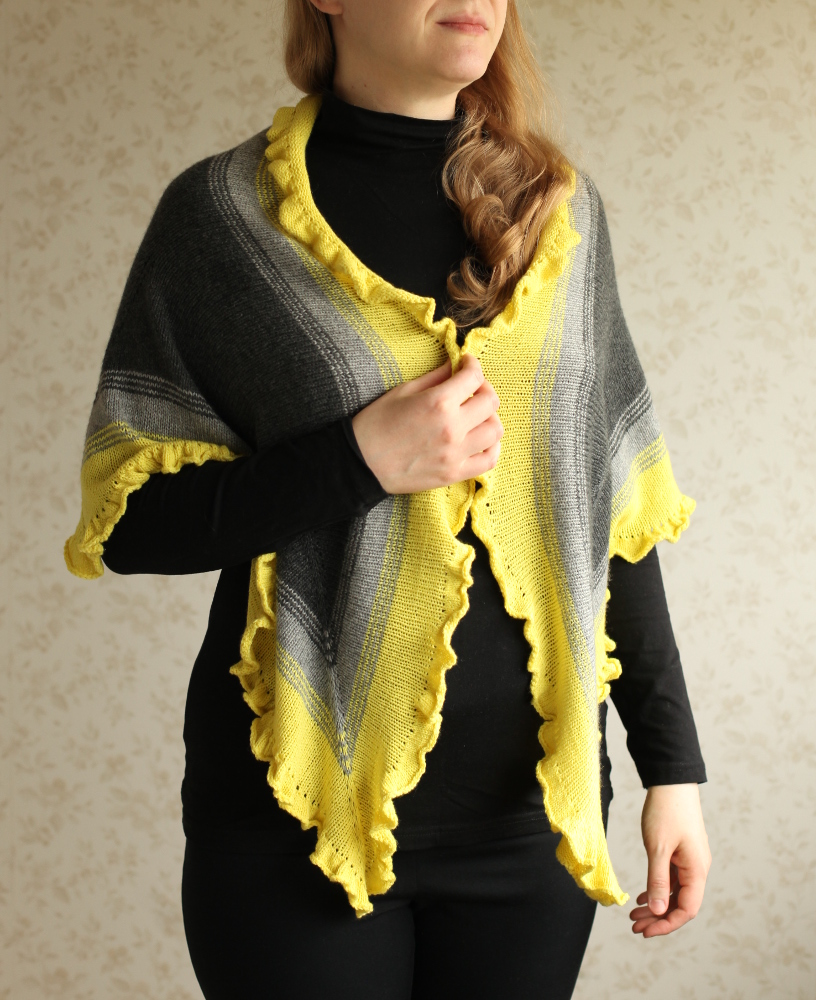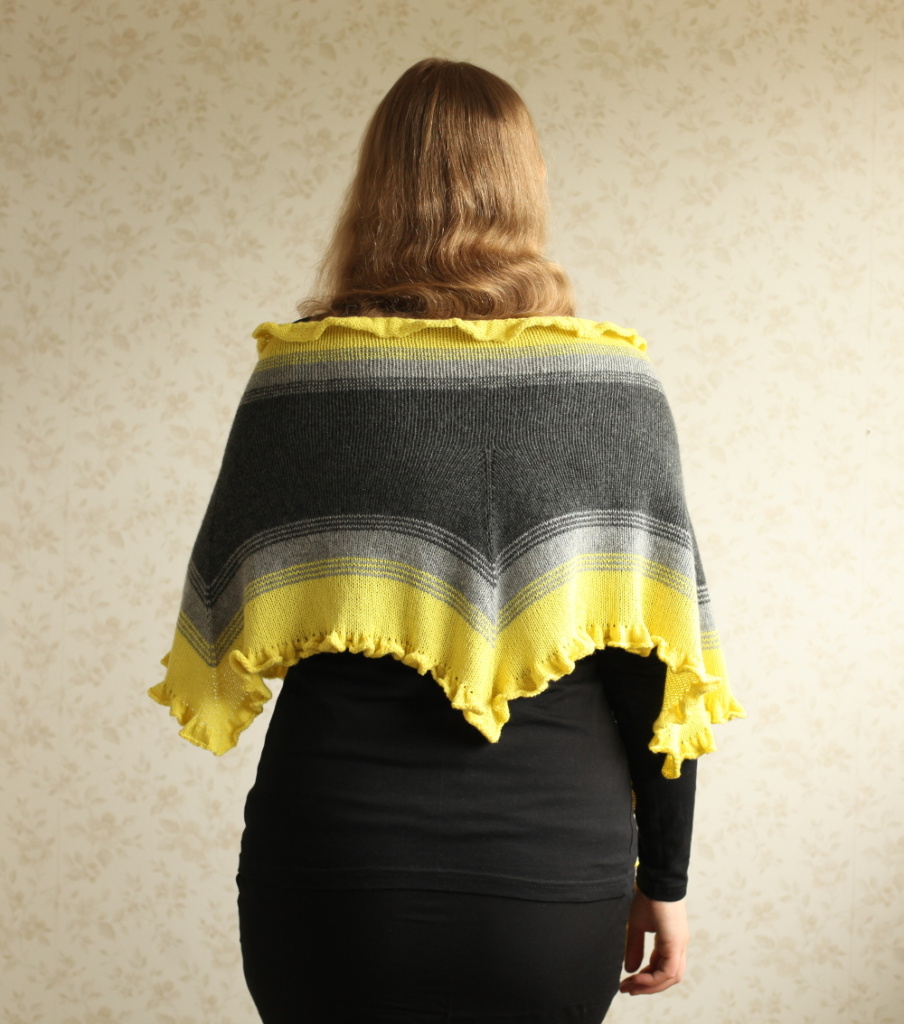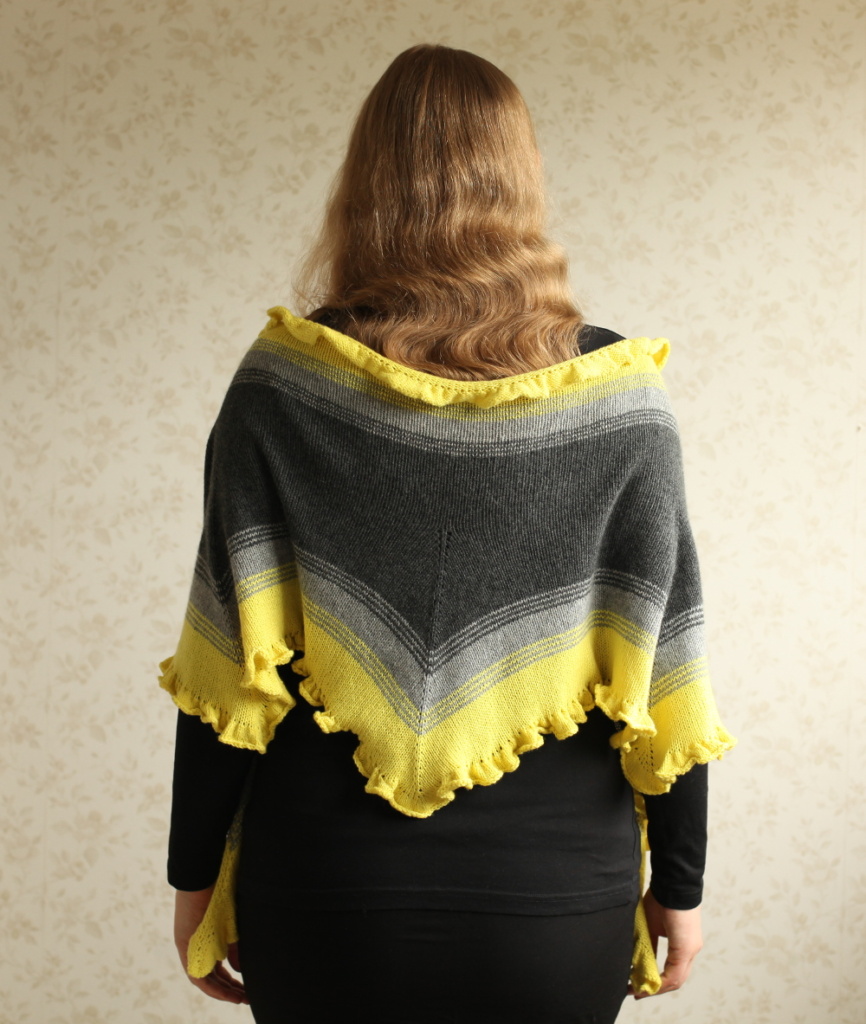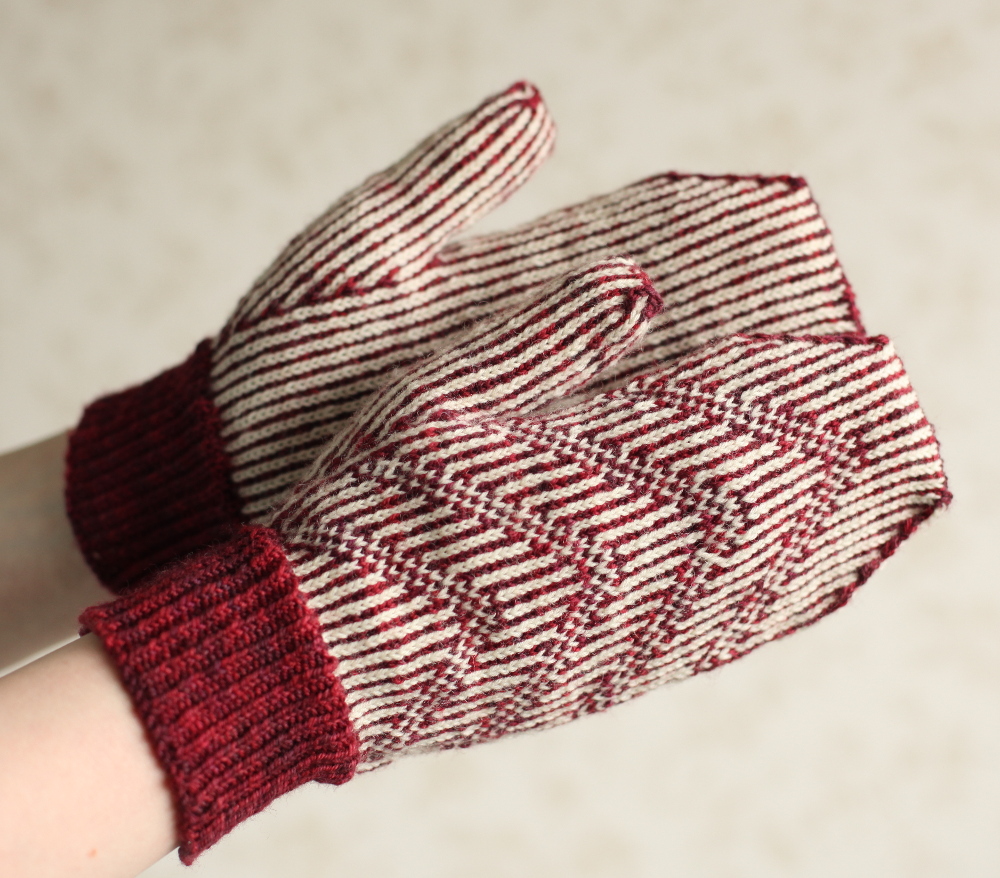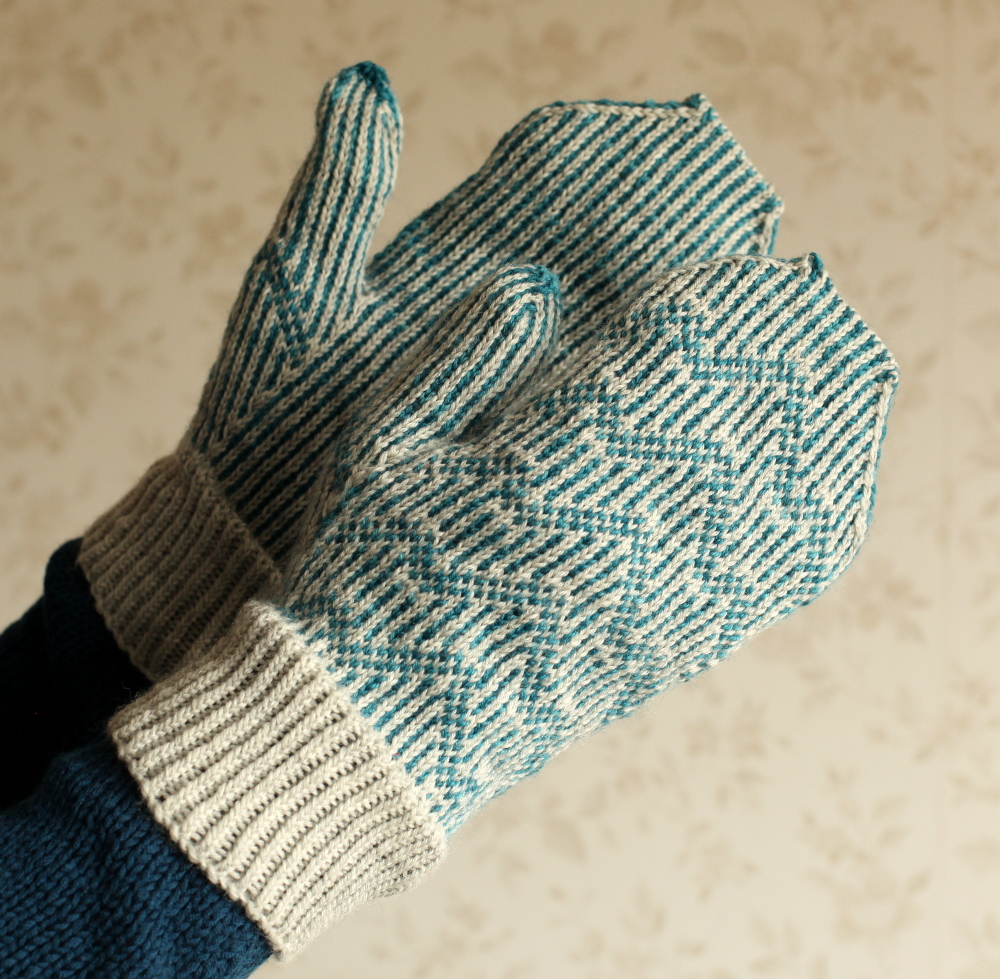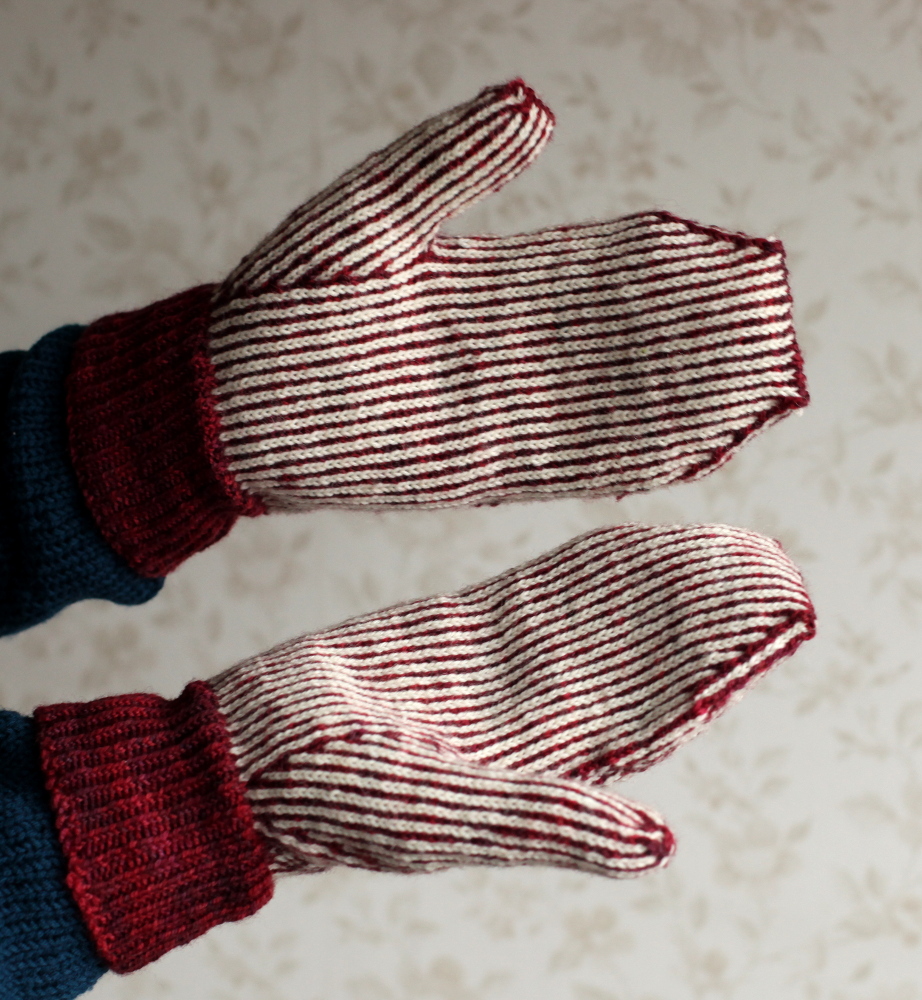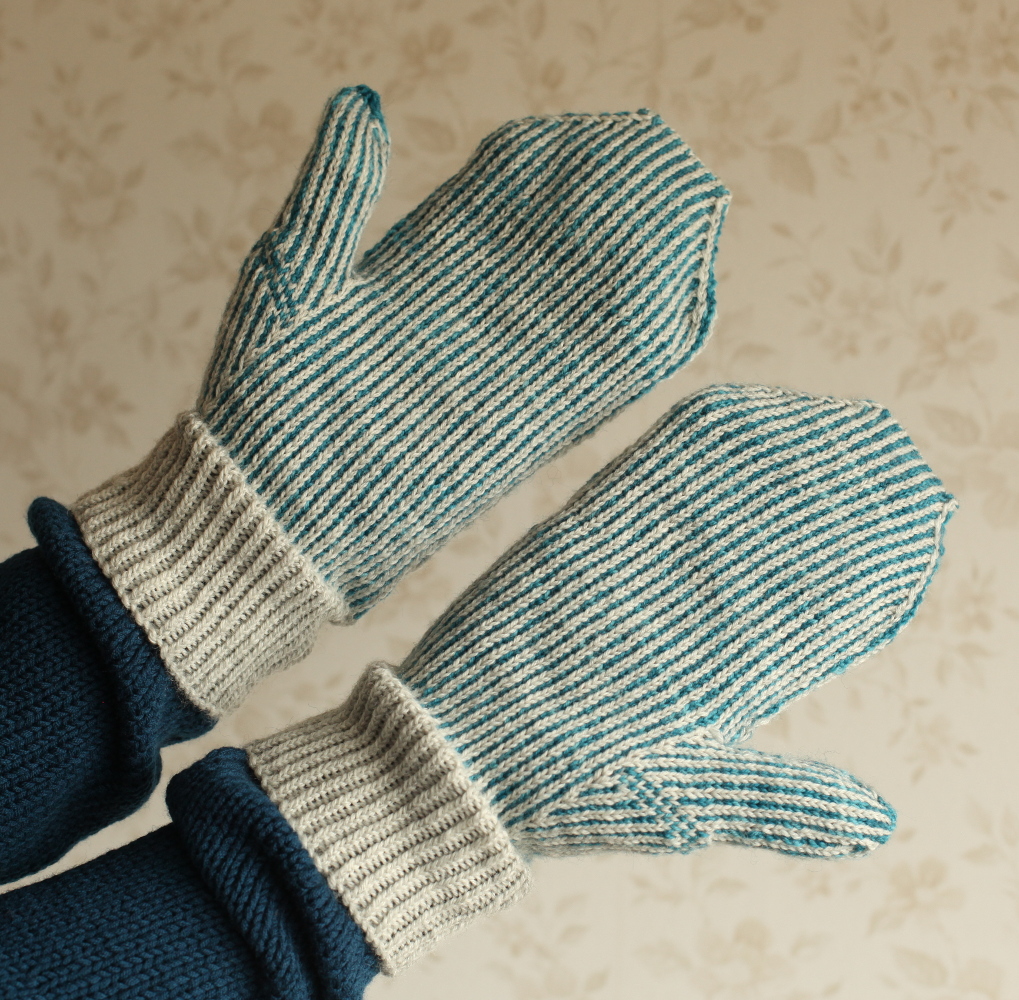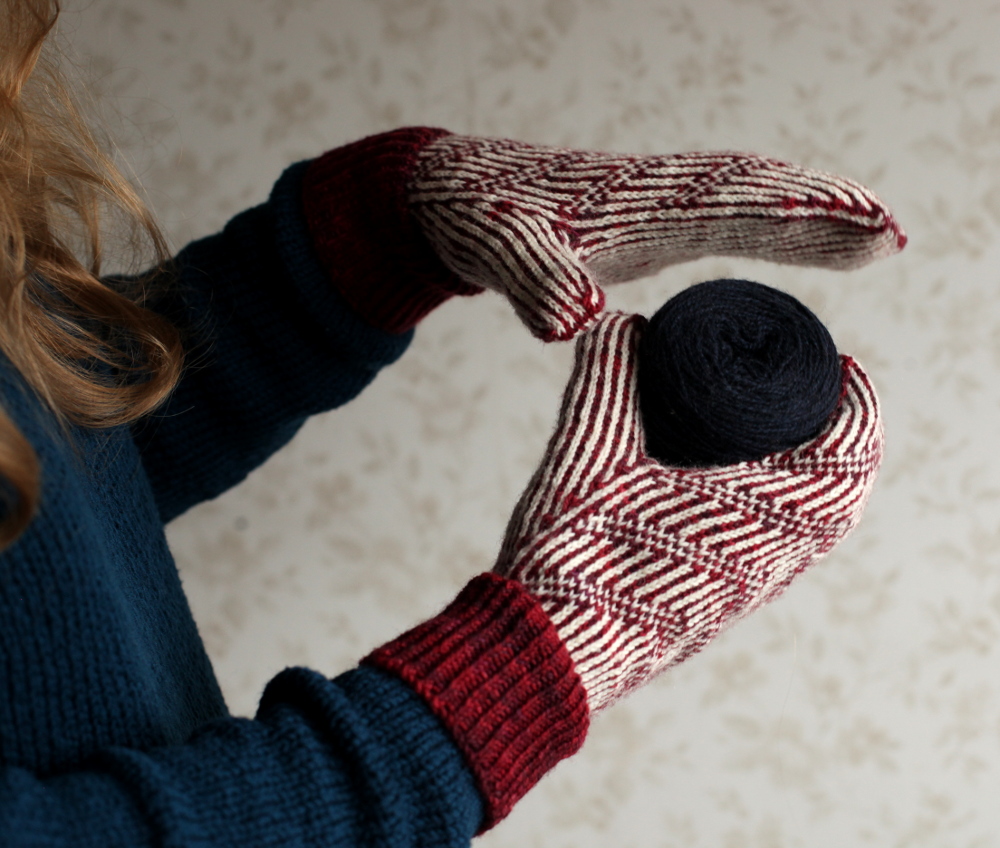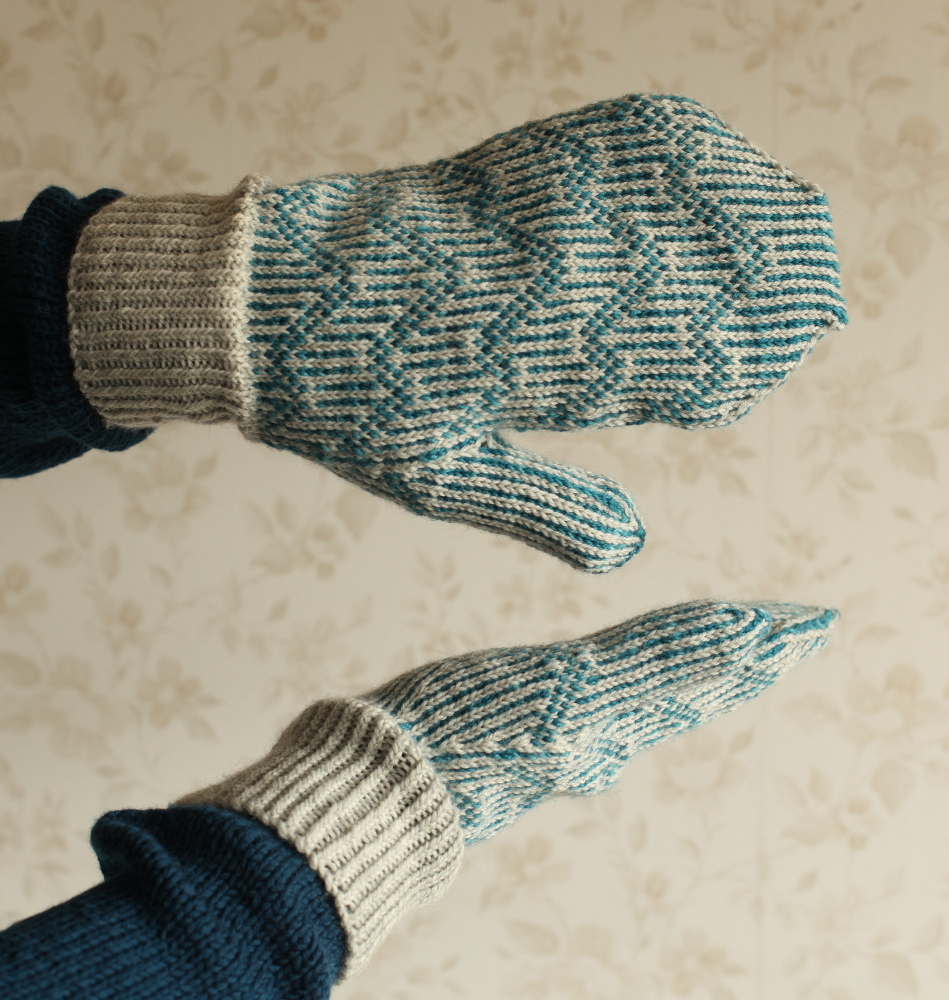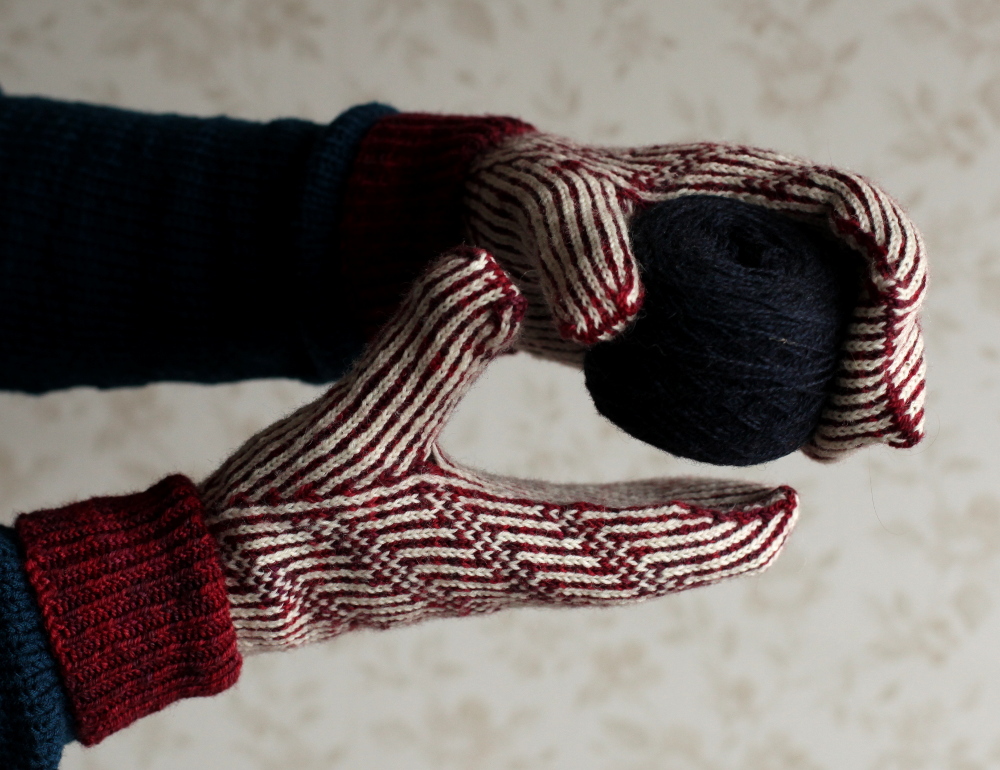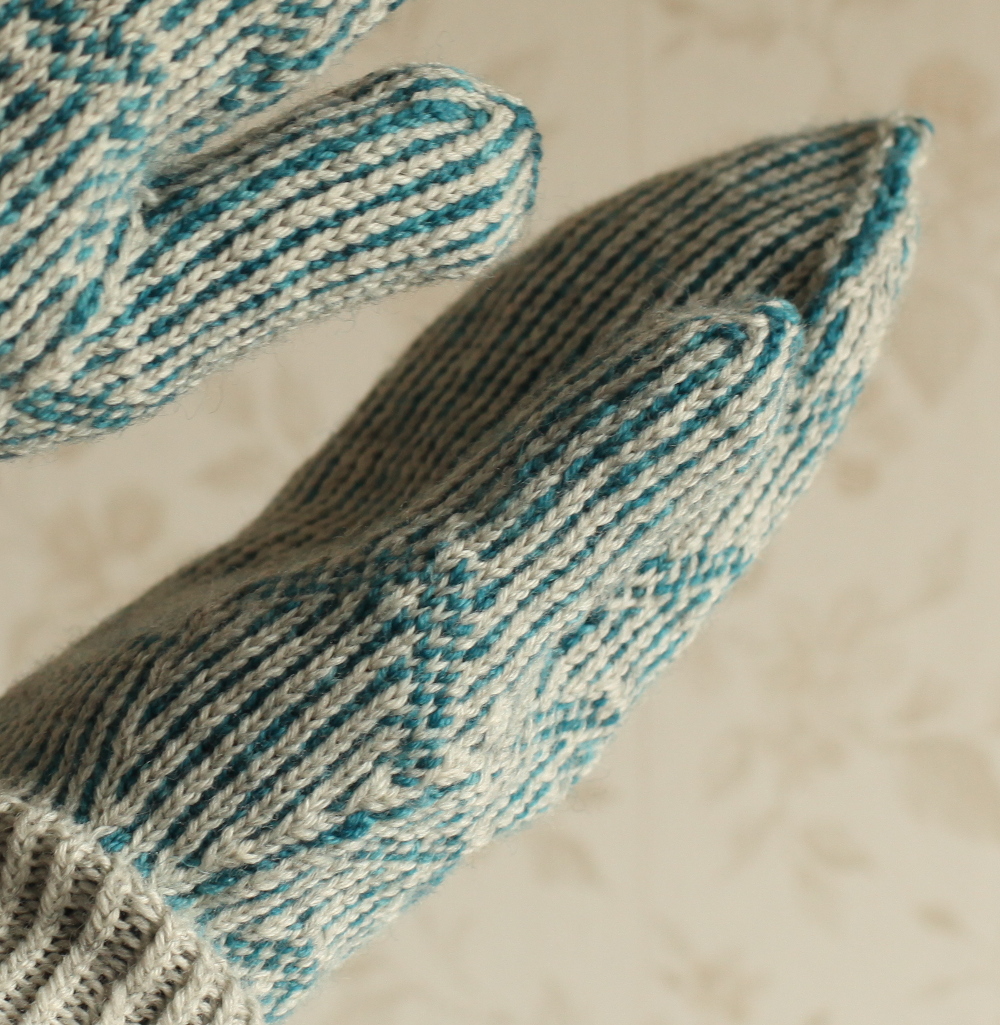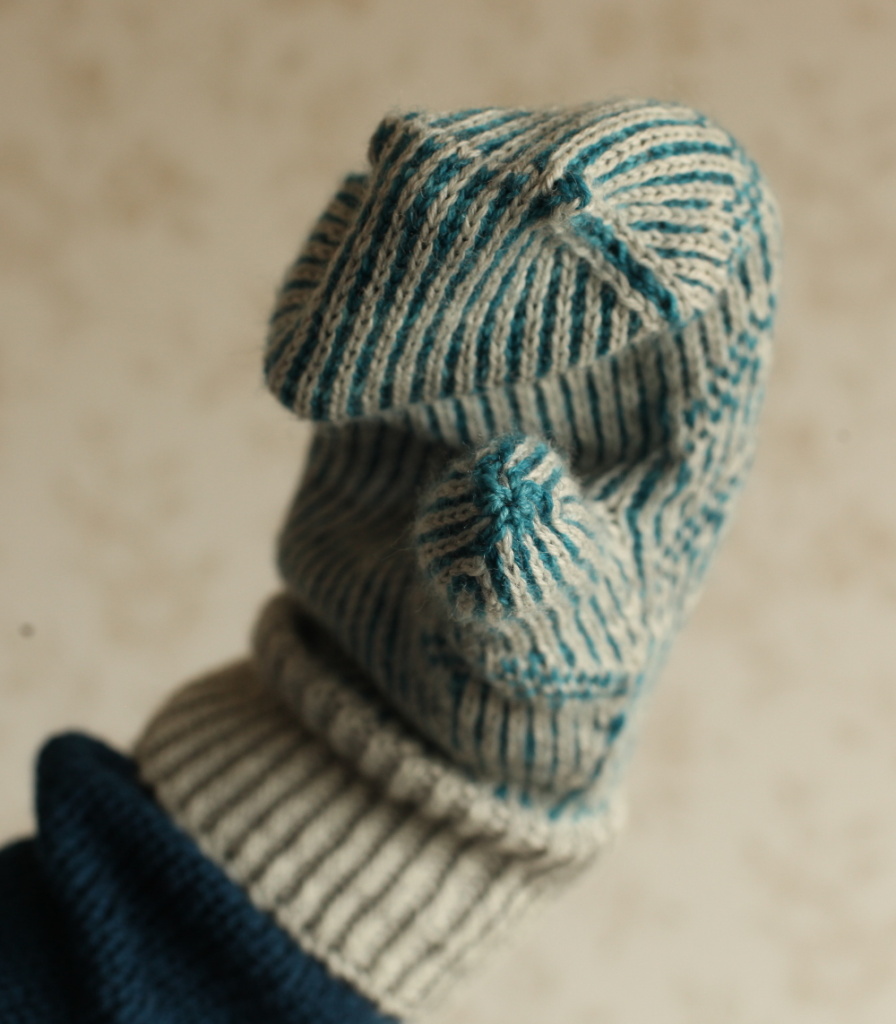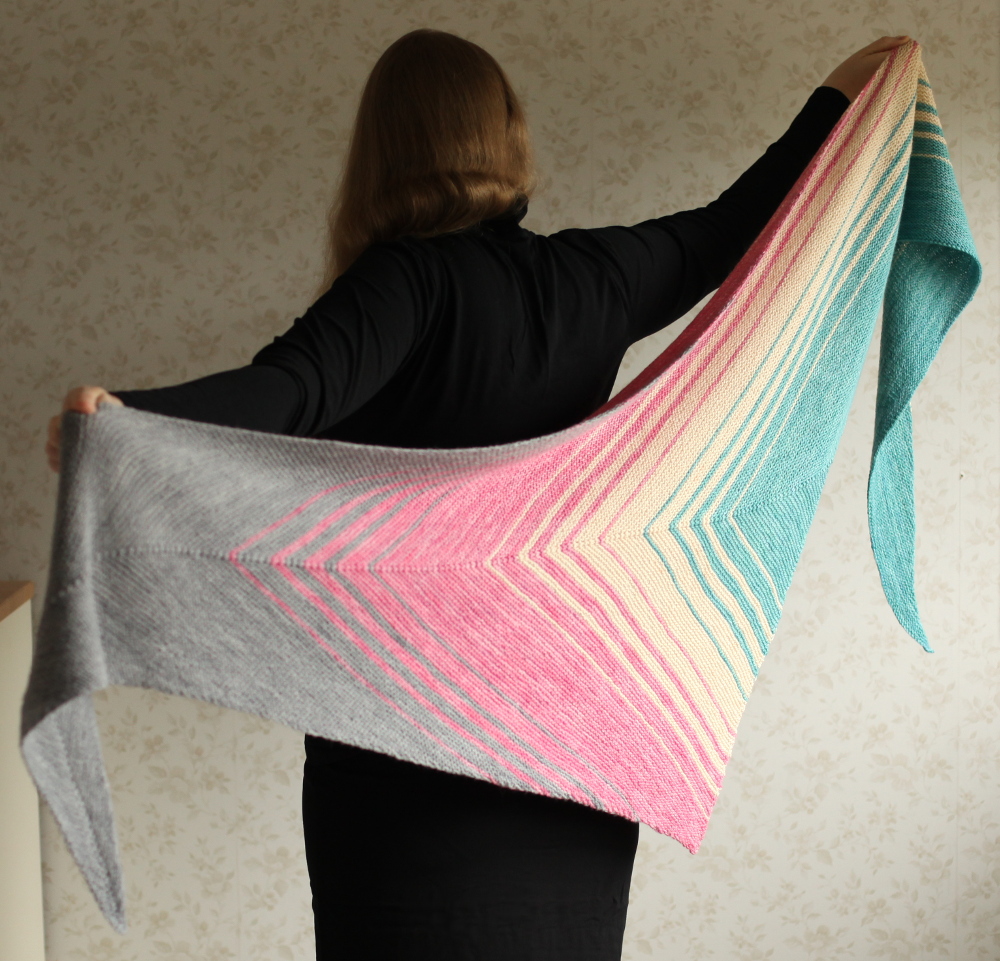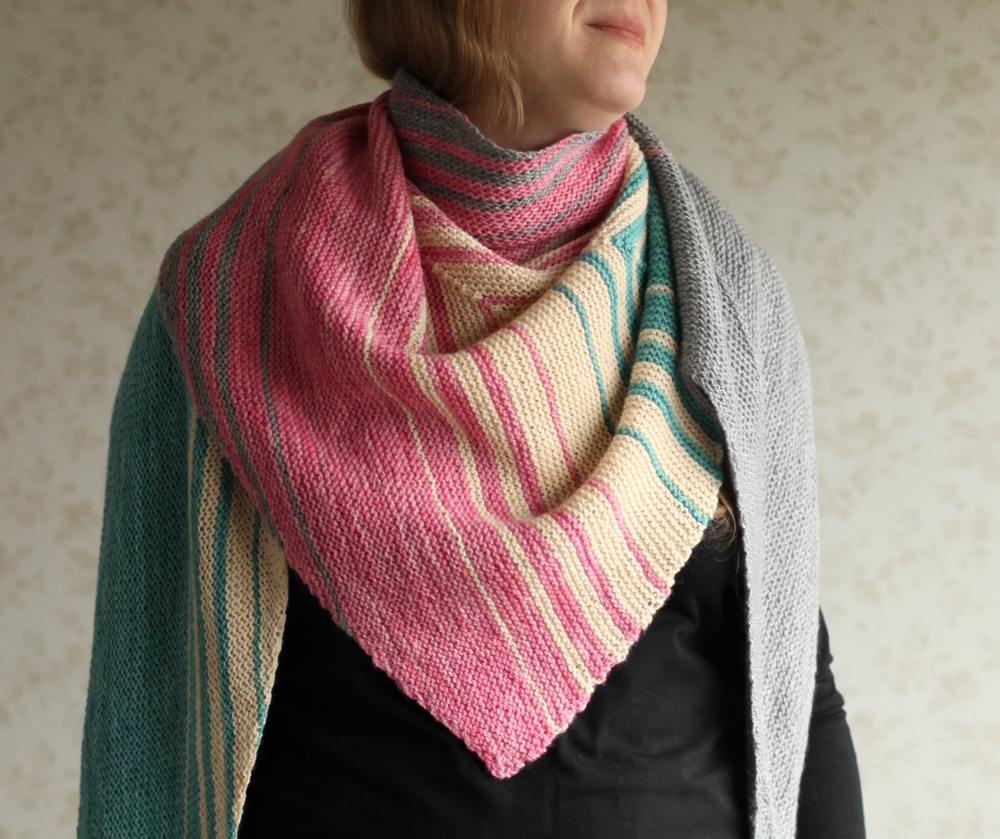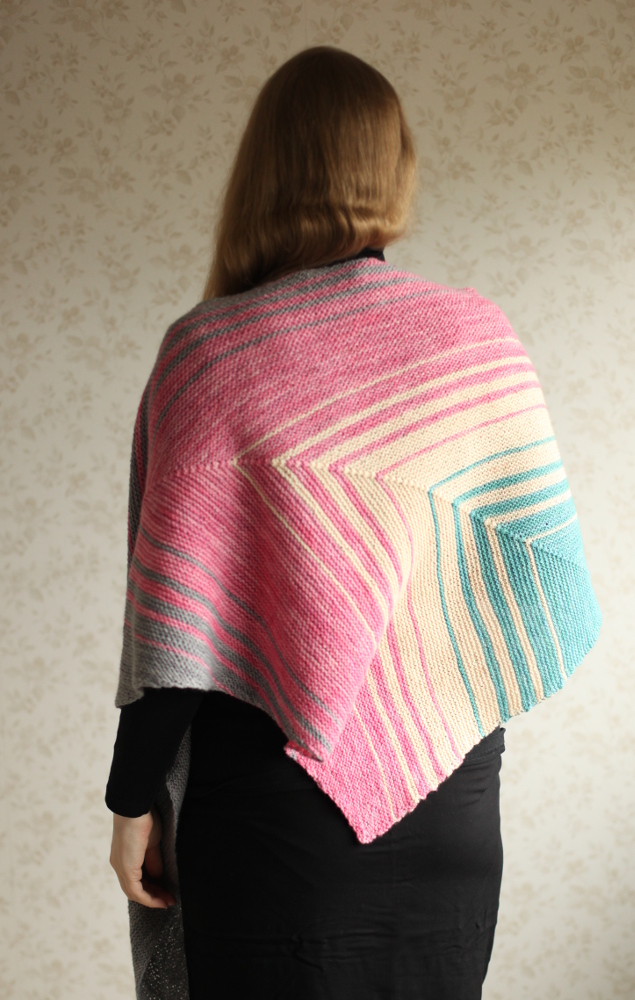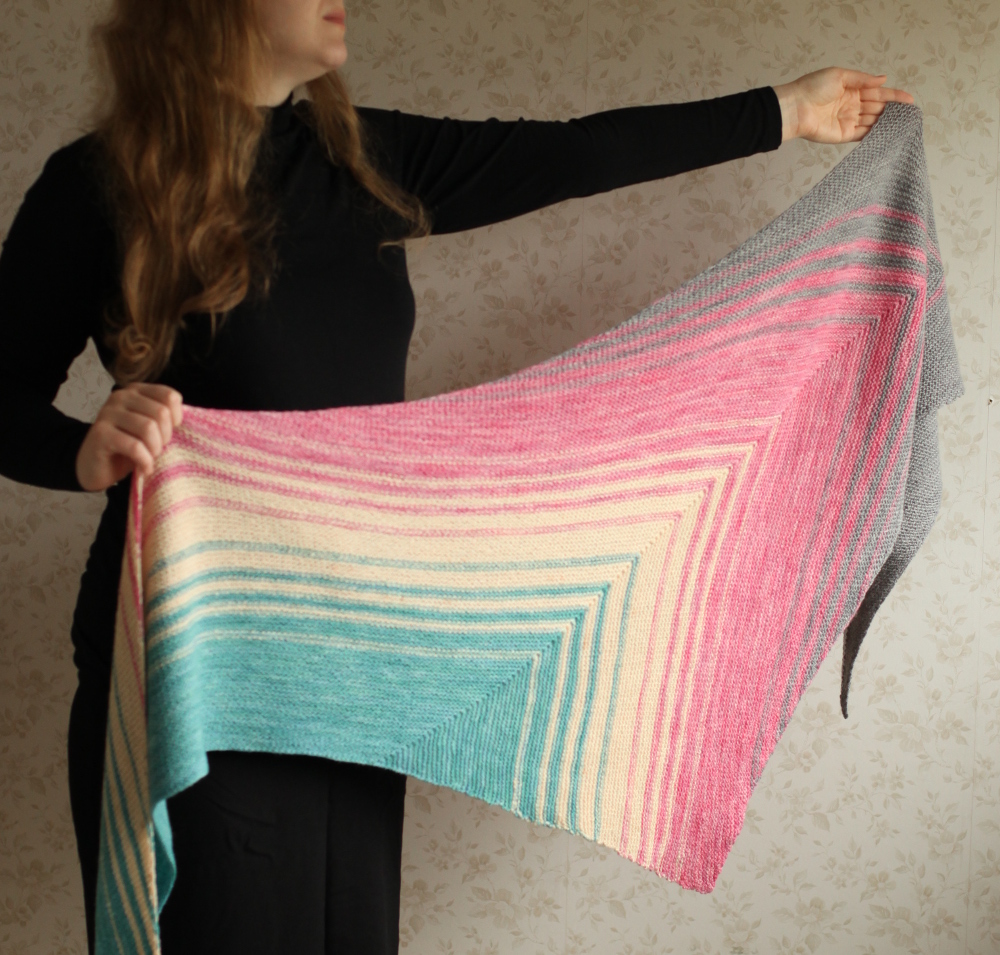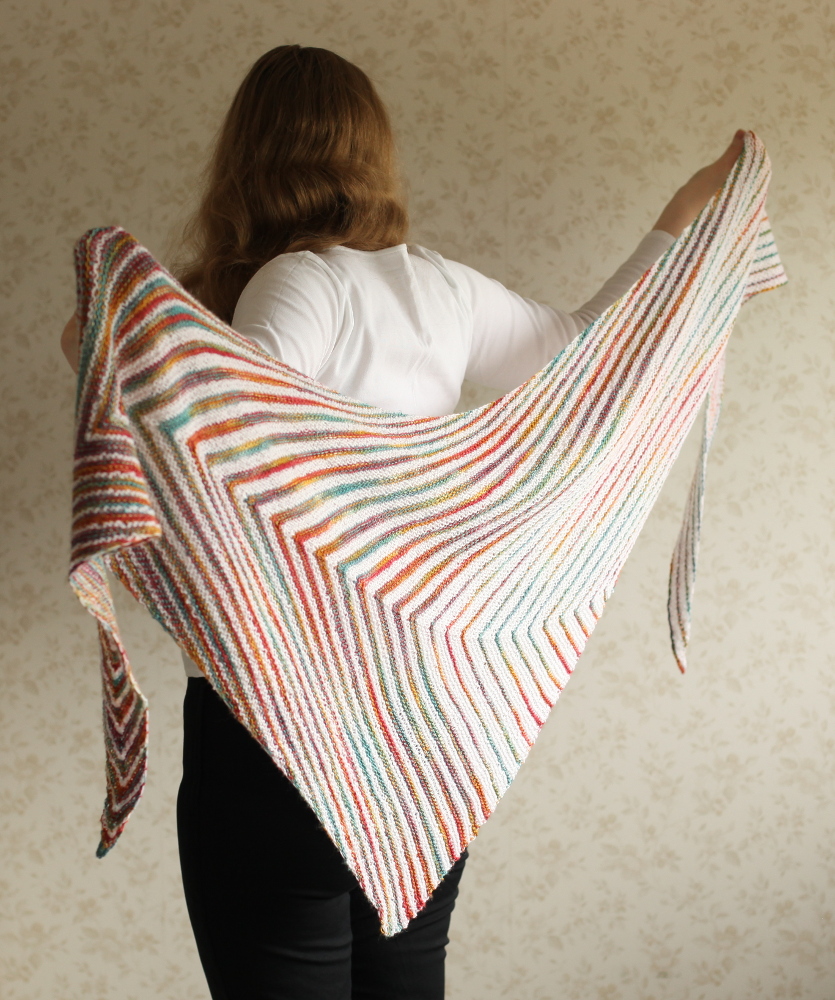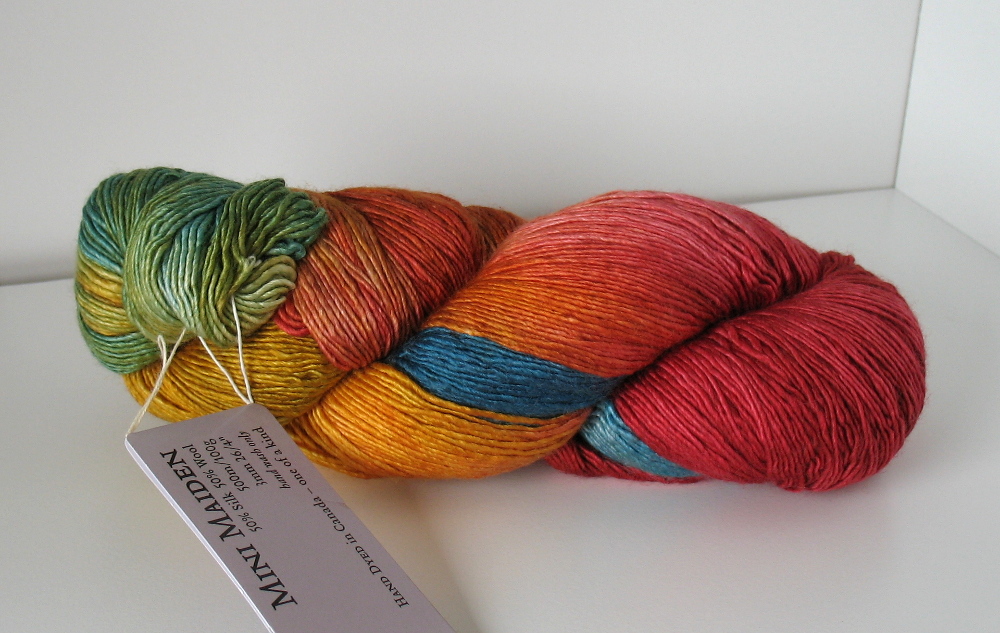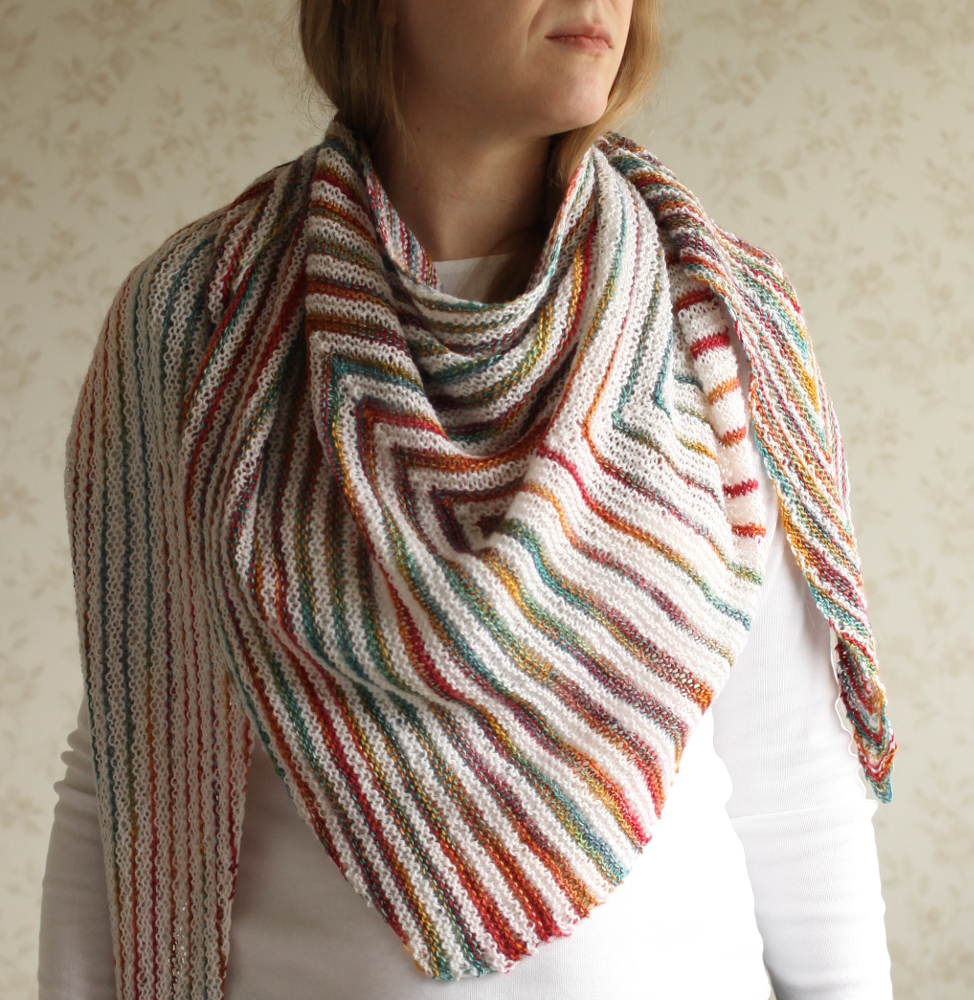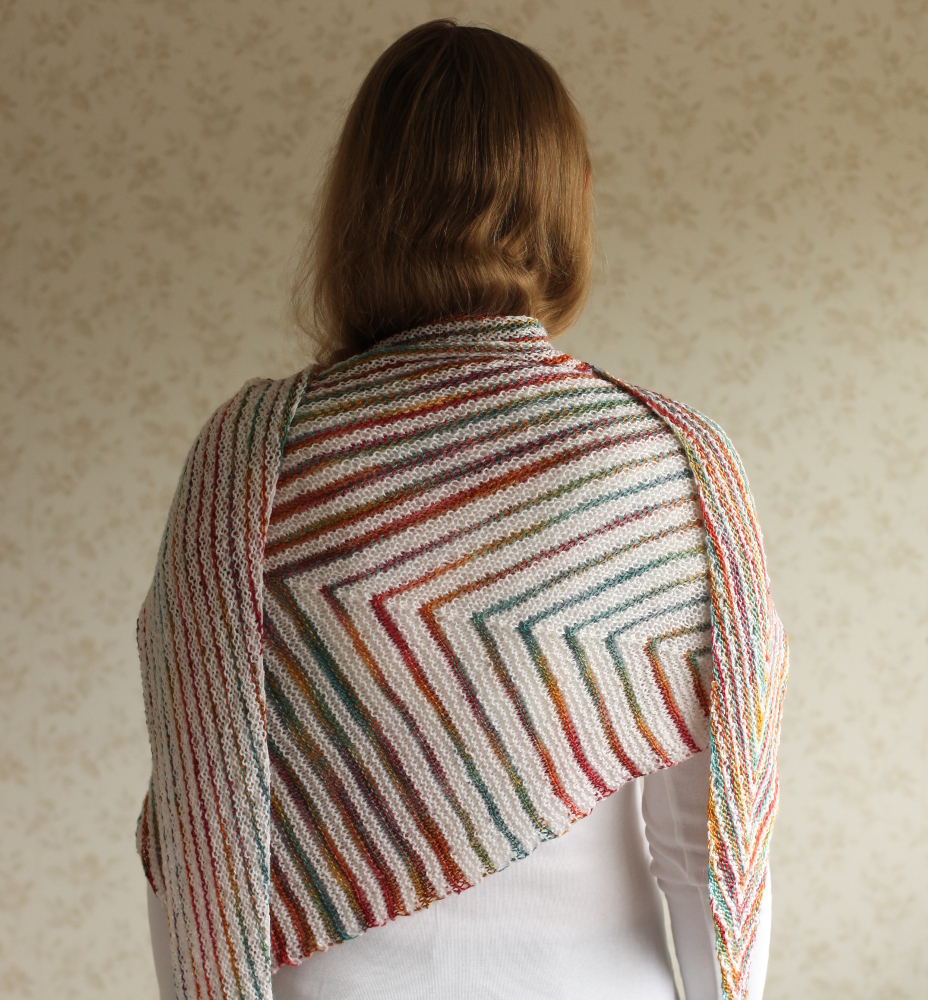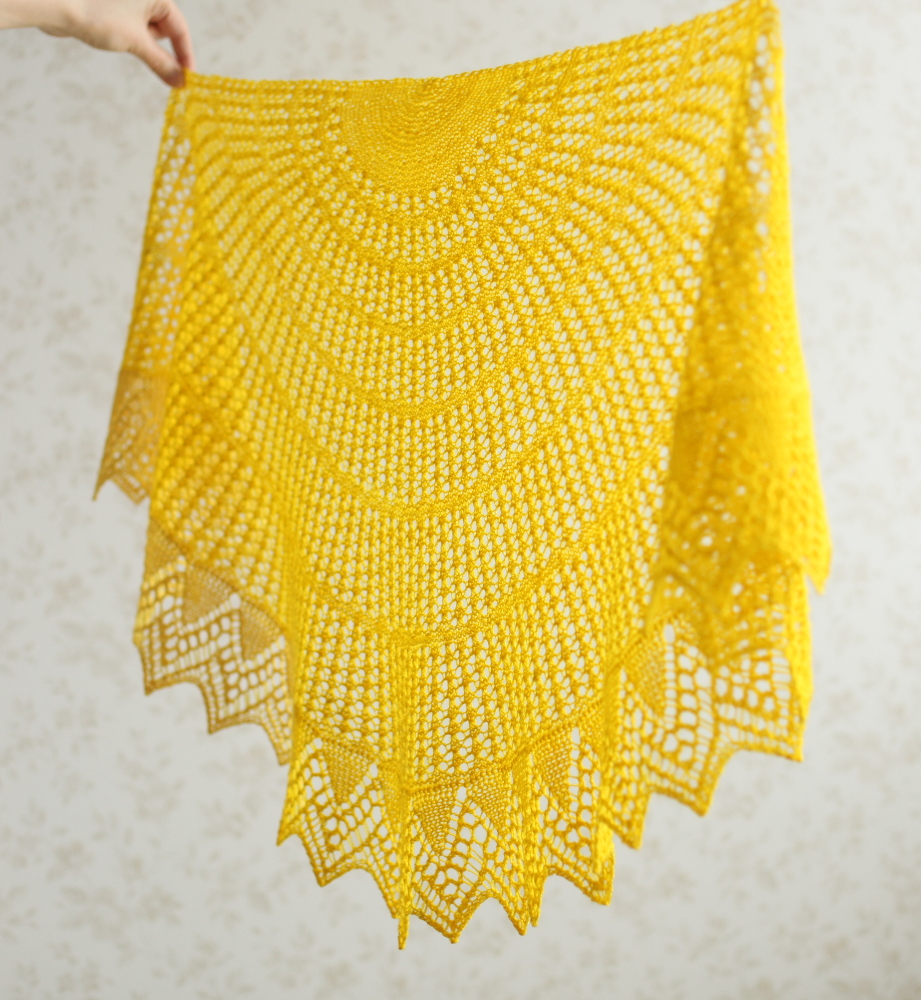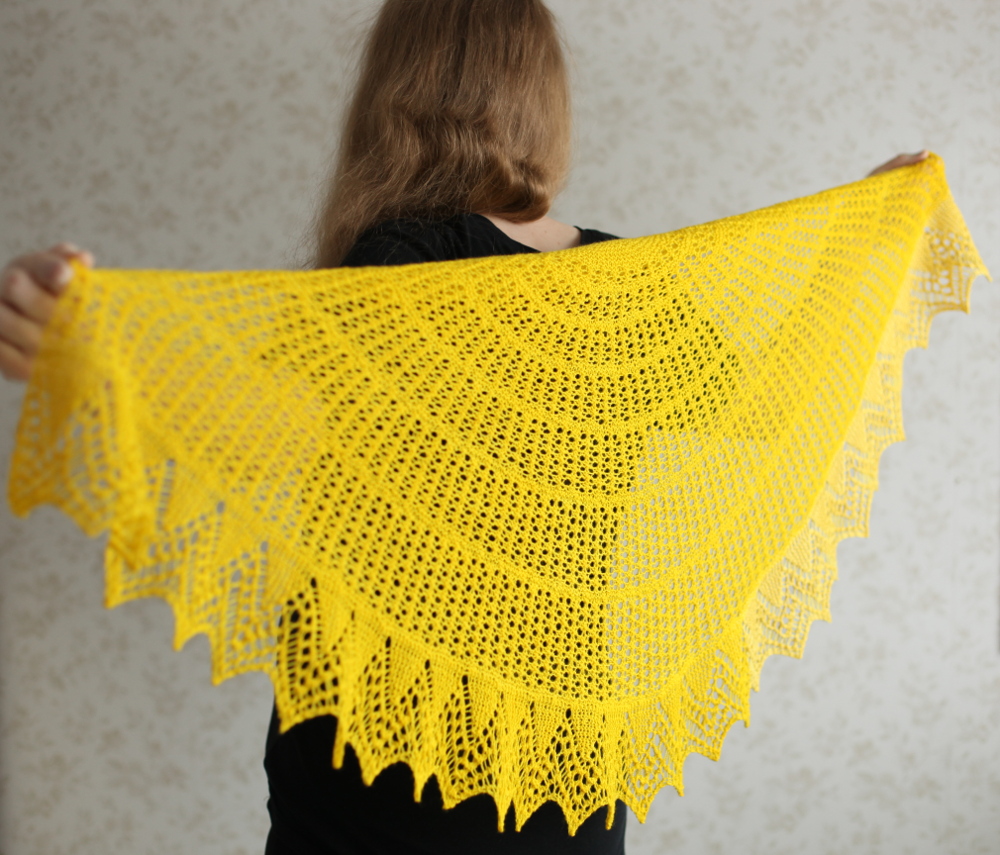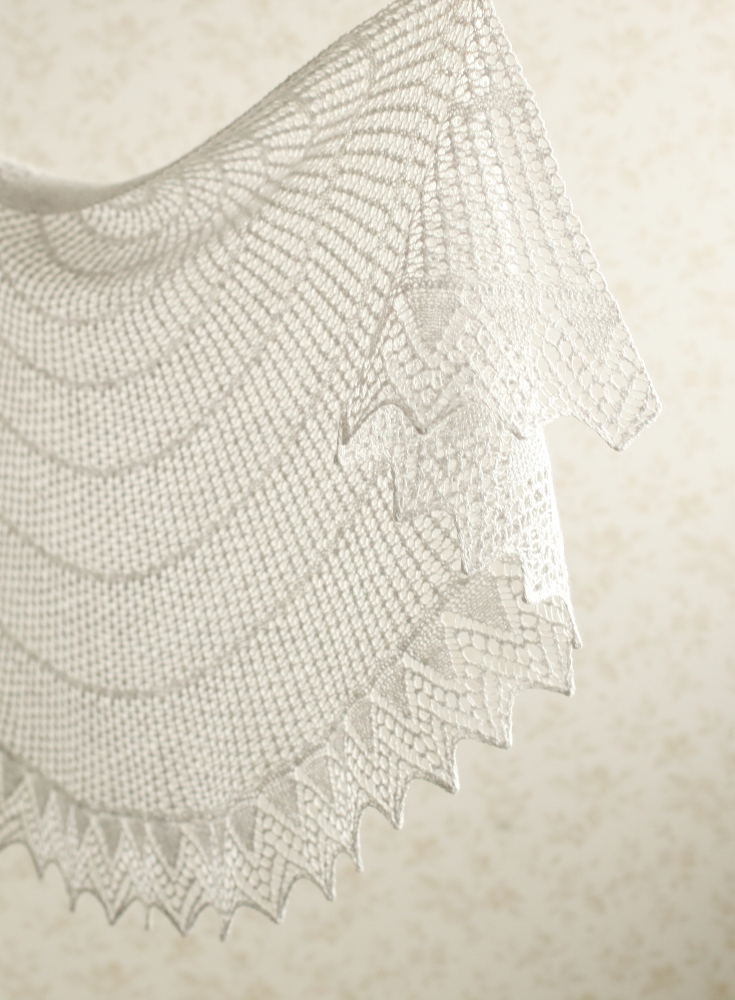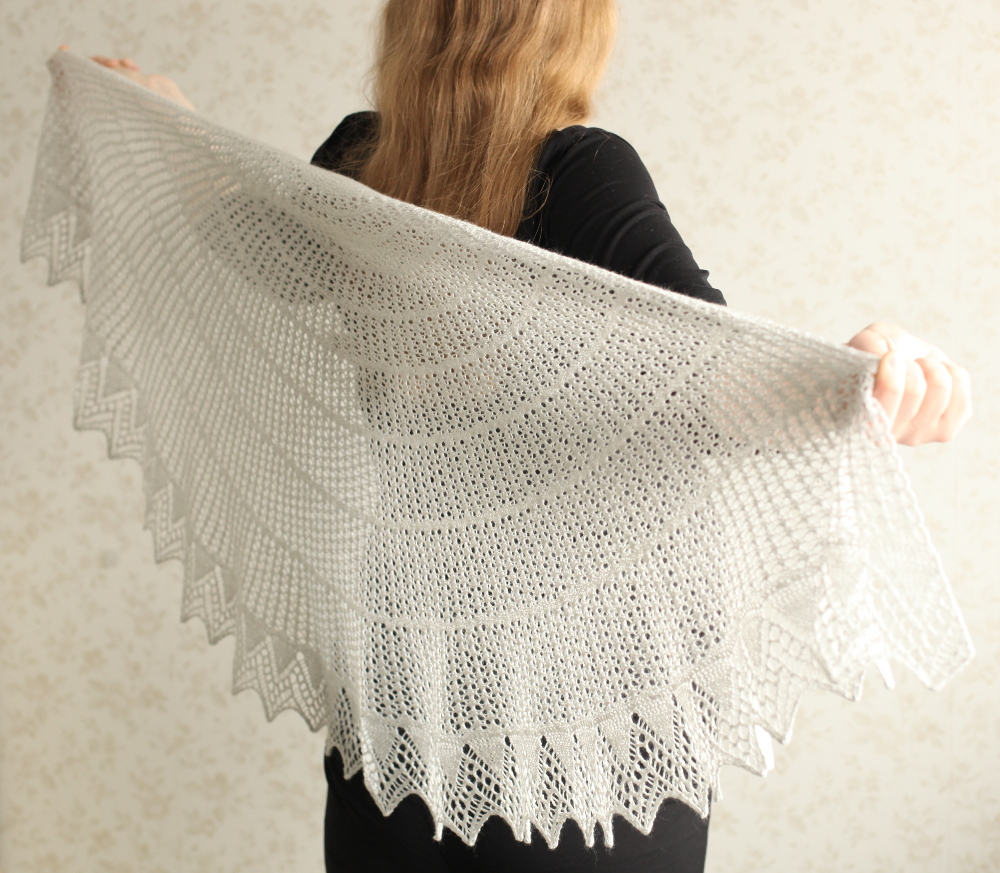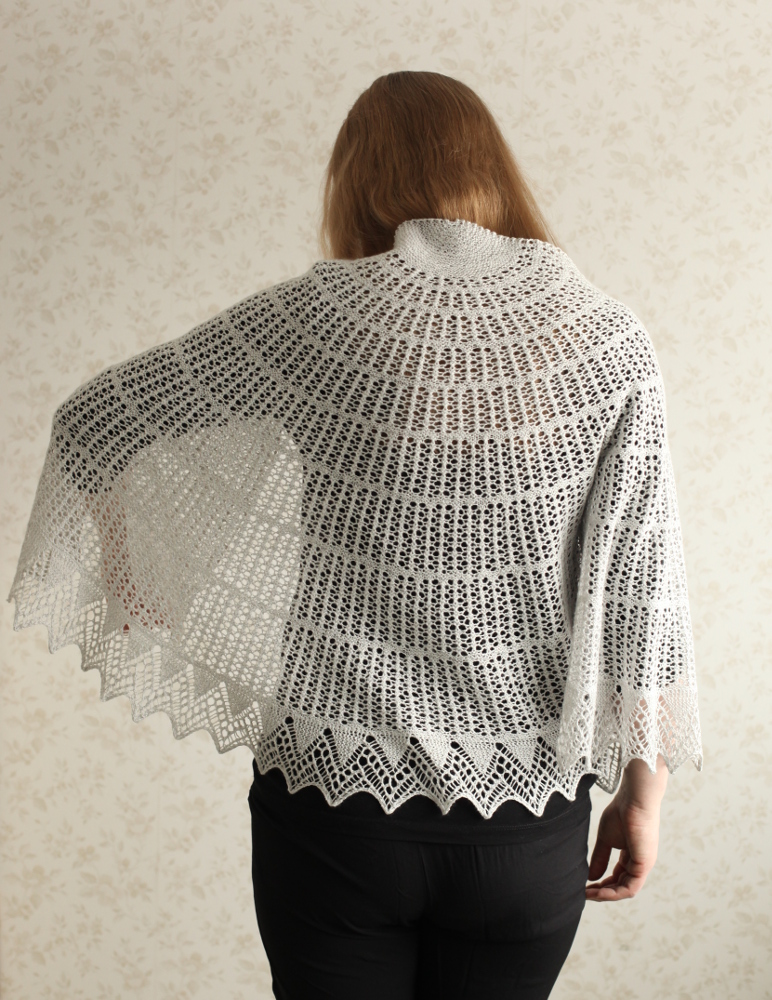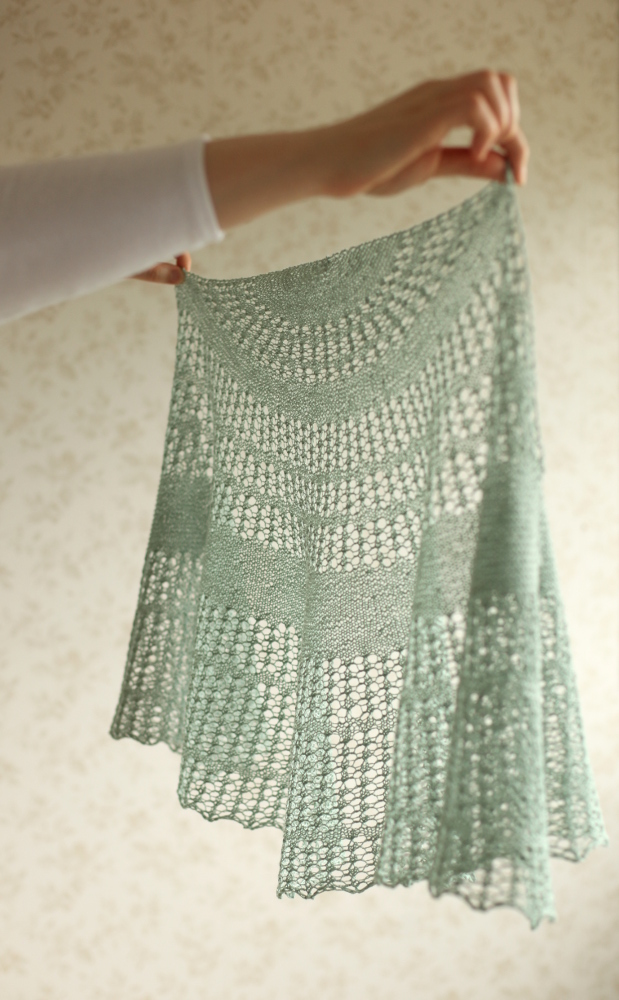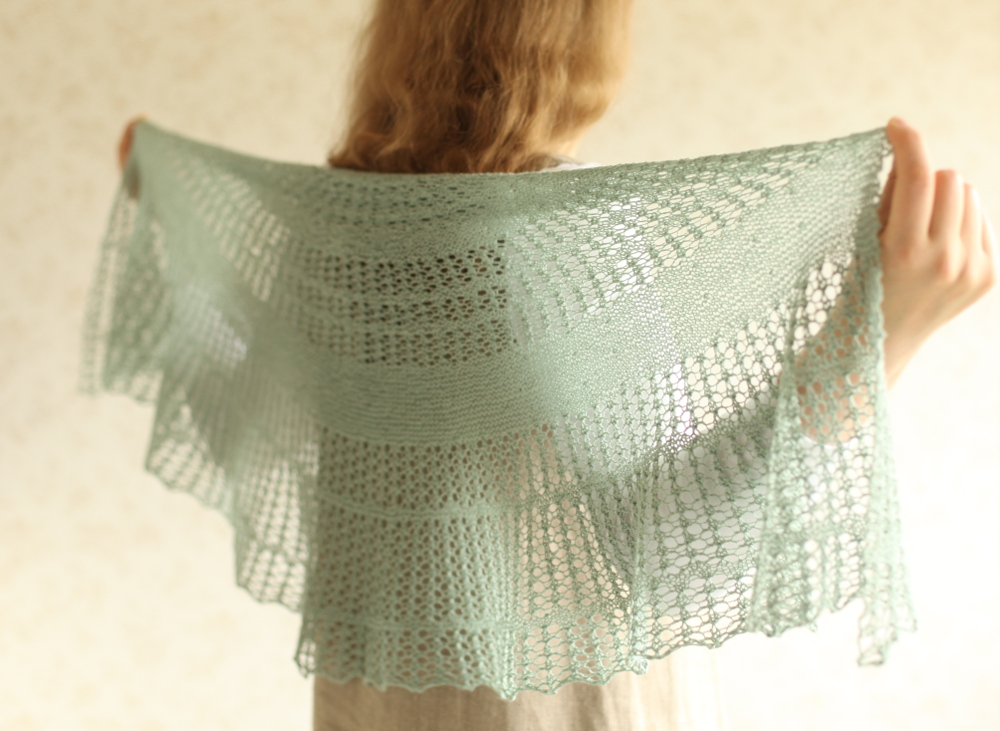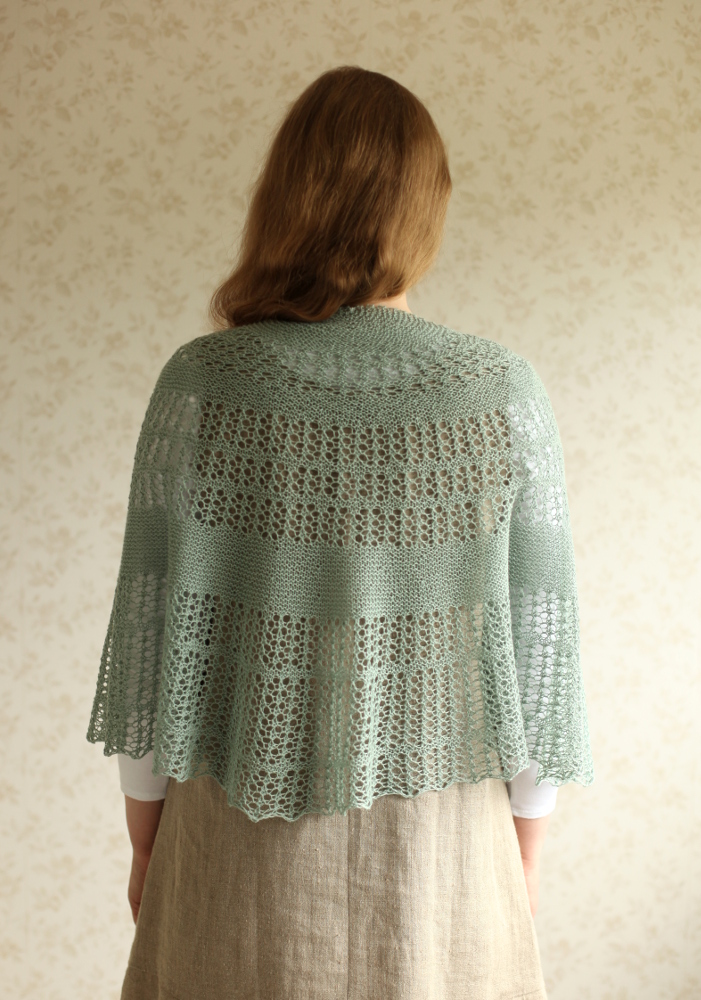I’ll need to begin the story of the Nummi shawl from my previous shawl project. My daughter wanted me to knit her a pink shawl. I found a suitable pattern and cast on. After working around twenty rows I started adding my own ideas, and soon I decided that I wanted to use a different increase method than the one used in the pattern. So I unraveled and restarted.
I worked the triangular shawl in garter stitch, adding narrow stripes of stockinette stitch. I came up with new stripe patterns as I was knitting, alternating garter and stockinette. I was often knitting the shawl when I was outdoors with my kids, walking to the playground. I started calling that shawl Matka, which means journey in Finnish. For several reasons I ended up not writing a pattern for that shawl, though.
My daughter’s shawl turned out to be so wonderful that I wanted one, myself, too. As with my daughter’s shawl, I didn’t stick to the previous version, but made several improvements. The shape was very close to the original: a triangle worked from the top down, clearly wider than it is deep. That kind of shape also suits people with a shorter back.
Since the yarn was unbalanced, being a bit overtwisted, stockinette stitch would have biased. So I would need to have an equal number of knit and purl stitches to counteract the bias. That’s why I worked the shawl mostly in garter stitch, since garter would show no sign of the bias. Again I added narrow stripes of stockinette stitch. This time I planned the stripes before knitting. At least my spreadsheet looked great, so certainly the shawl would, too.
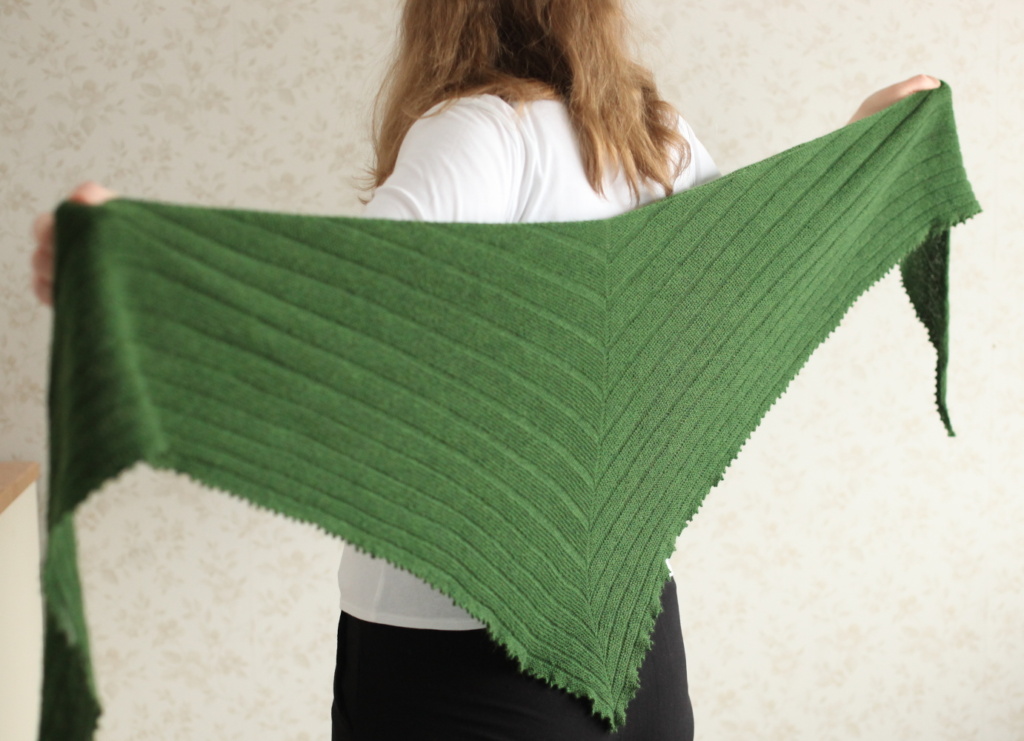
The shawl project was TV knitting at its best. A simple pattern and a lot of long rows. I didn’t hurry, since one must always have a brainless project on the needles. When every other project fails, it’s soothing to pick up that simple piece that just works, independent from any struggle with other crafts projects.
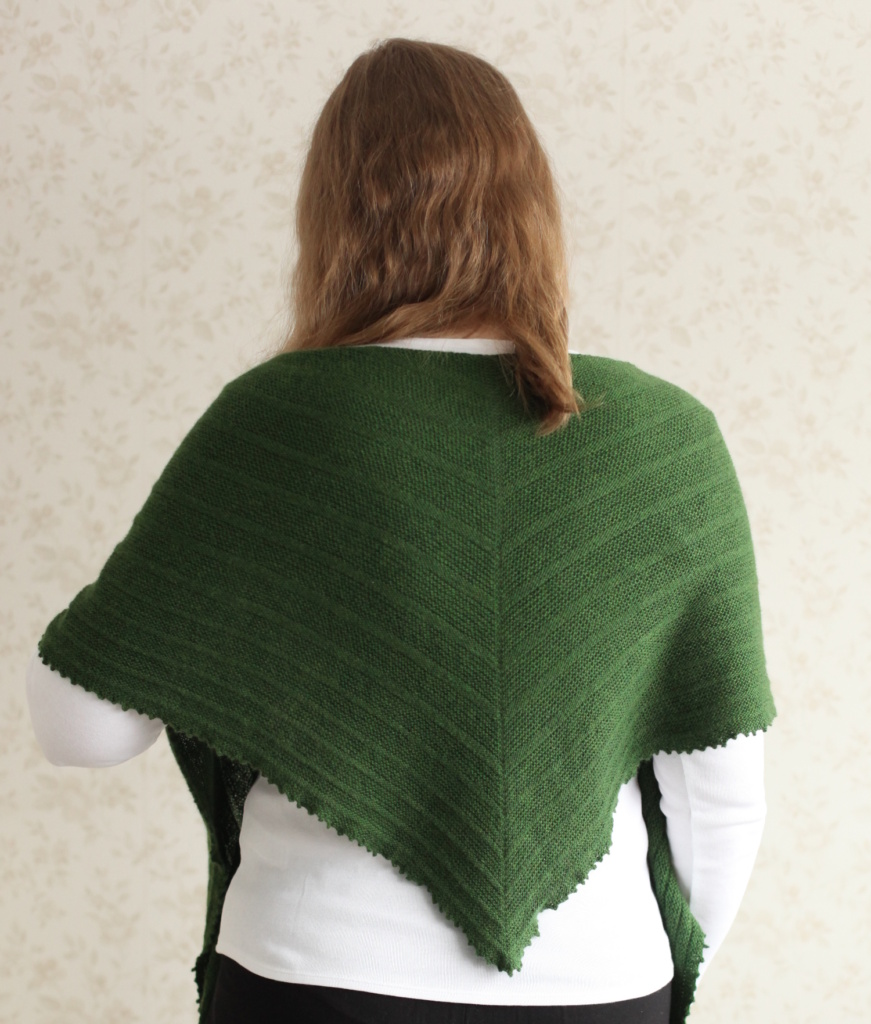
After finishing the shawl, I wrote the pattern. I tried to measure the gauge from my finished shawl, as I usually do, but all the stripes were so narrow that I couldn’t get a reliable row gauge. So I knitted a swatch. One normally knits the swatch first before the actual project, but this time I did the opposite!
Nummi shawl pattern is now available via Payhip and in my Ravelry store.
